
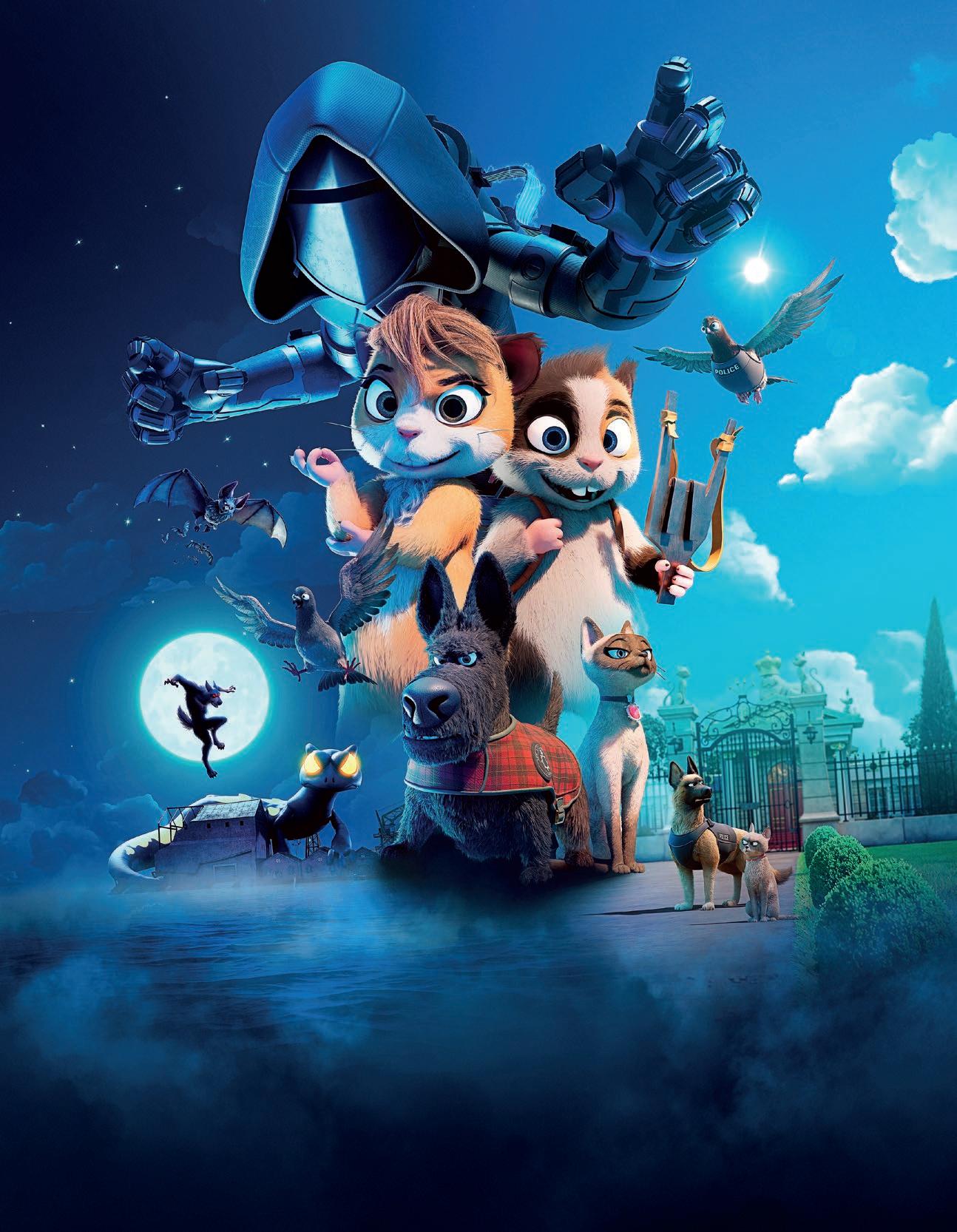




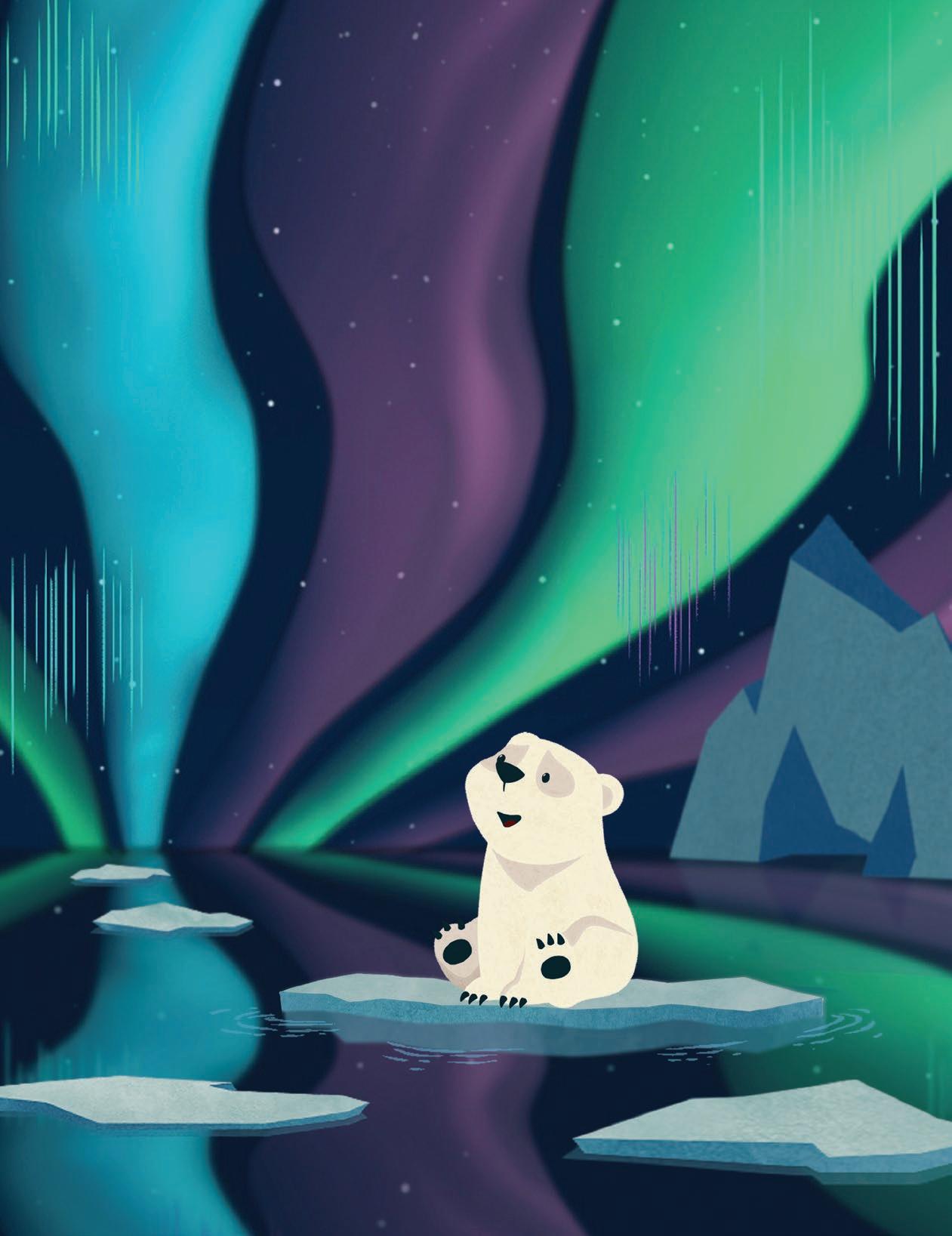


Broadcasters
Showcase
Highlighting
Wednesday, 18th October 11:00~12:00
Palais des Festivals Audi A
R8.B3 R7.L3 R8.D15 R8.D3 R8.B18@ Riviera 7. E2
DURING MIPCOM 2023
KOCCA Proudly presents 100+ new & upcoming Korean content You can visit www.koreapavilion.kr to look at the utmost Korean content in advance.
Networking event
KOREA PAVILION Cocktail Party @ Riviera 7. E2
Tuseday, 17th October 17:00~19:00
Enjoy drinks and lite bites, and find out more wonderful K-Content in NEW Korea Pavilion at MIPCOM2023!


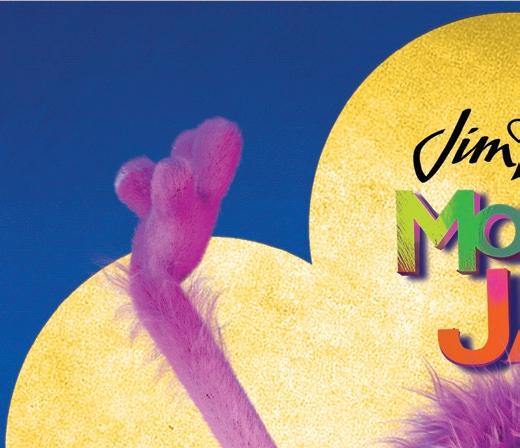


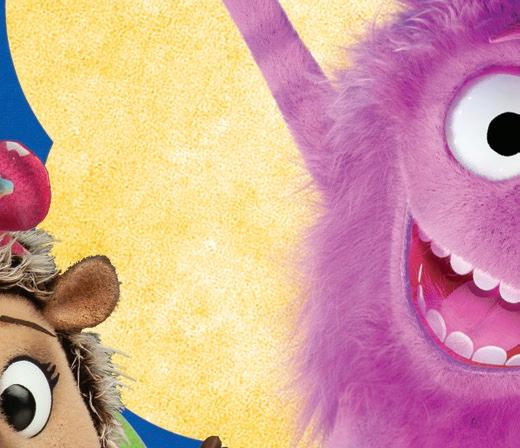

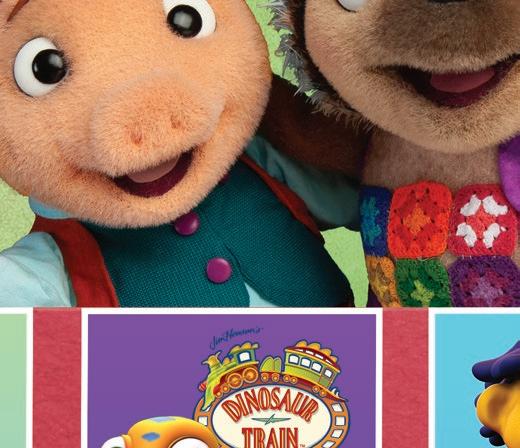
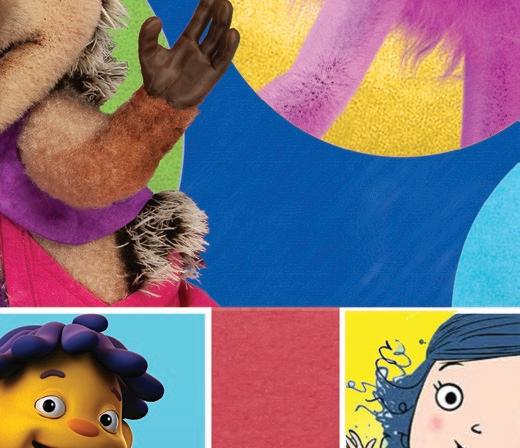
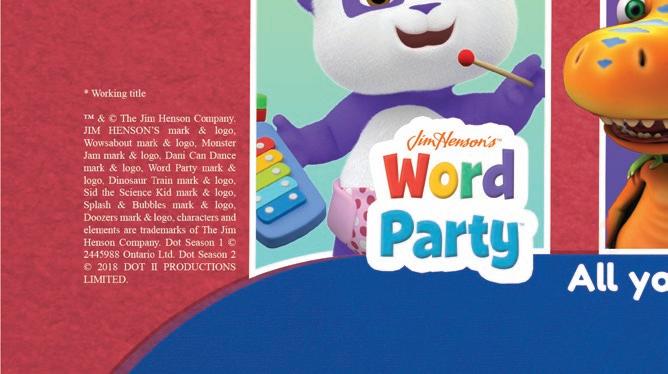


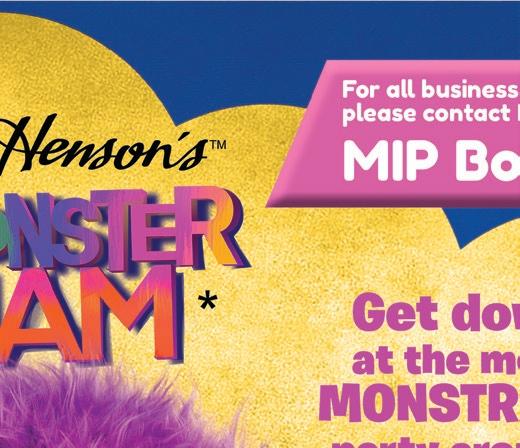


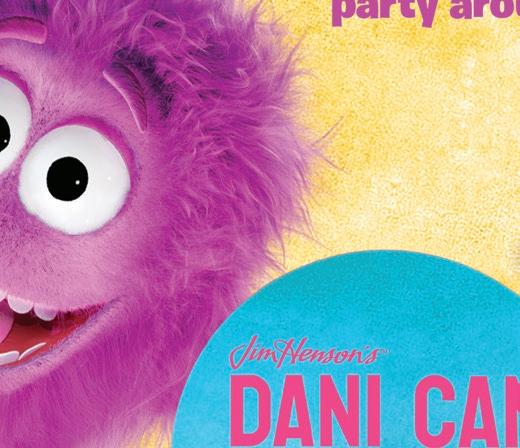
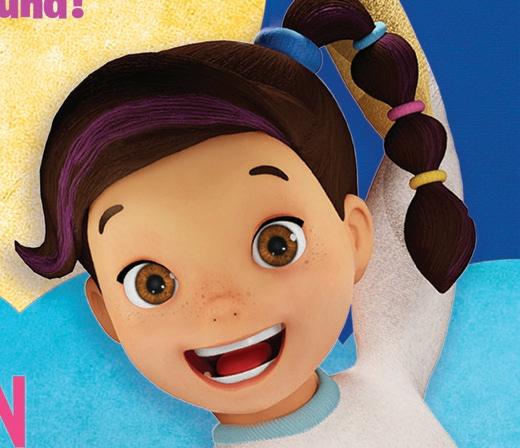

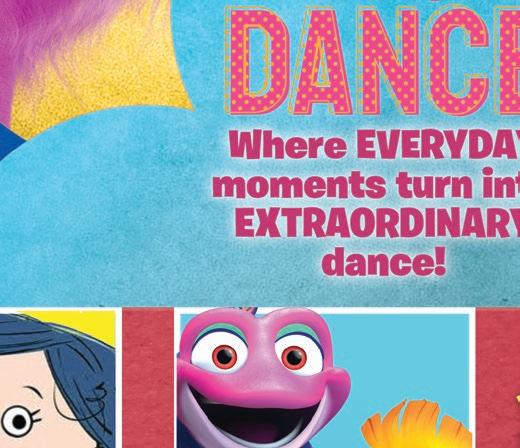
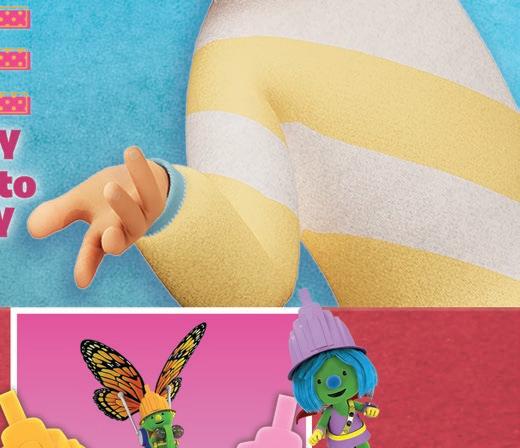



The List—What’s on our radar this month, from Barbie and Blippi, to strikes and the Super Bowl.
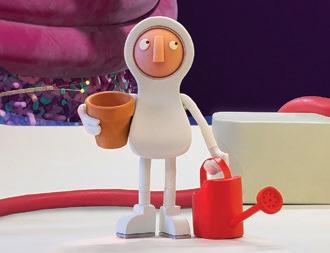

The Middle East is poised for growth and globalization, but challenges still exist.
Toycos are shifting from mass market to alternative retail channels, including value and online pipelines.
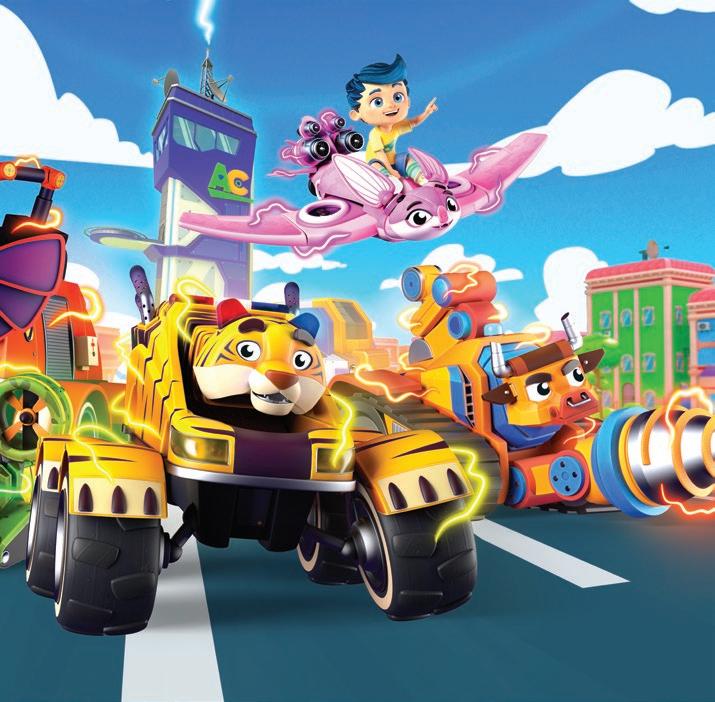

kid insight
How future consumers are discovering and engaging with online platforms.
tech
Is social media the next big opportunity for brands looking to connect with kids?



all is associated with many things: cozy sweaters, crisp apples and warm pumpkin-spice lattés (or PSLs for those in the know). The weather changes, the leaves turn color, and the days grow shorter.
And yet, this season isn’t just a time of change, but also one of fresh starts. Kids go back to school, farmers prep the land for next year’s crops…and a new TV season gets underway. Once the hustle and bustle (and heat) of summer dies down, we’re all feeling ready for something different.
This season certainly marks a new chapter in my career: This is my first issue as editor of Kidscreen. My background is in online journalism, with a focus on culture and entertainment news. I’m thrilled to have joined such a talented editorial team, and the fact that I get to work in the world of kids entertainment is an added bonus.
I live a very kid-centric lifestyle. My sprogs, a four-year-old boy and a six-yearold girl, dictate what ends up on our floor, table and TV screens. Their countless crafts, figurines and vehicles are ever-present in virtually every room—they have almost as many toys as my spouse, who is an avid collector of ’80s action figures. I have no complaints though; it makes for a very fun environment (mostly).
On the subject of toys, this issue looks at changes and opportunities in the consumer products market. Cole Watson examines the strategies toycos are using to address limited opportunity with traditional big-box retailers, which includes exploring alternate routes to customers (and explaining why I’ve been finding so many Transformers at my local Dollarama store lately).
Maryam Siddiqi looks at the subject of toys from a different angle, exploring the rise of products designed to encourage selfcare, social connection and social-emotional learning (SEL).
We discuss new beginnings on the tech side of the business, too: Ryan Tuchow explores the recent rise of kid-focused social media platforms, and the unique potential these spaces present for brands to connect with their audiences.
In addition to looking forward in this issue, we’re also looking back: Cole Watson and Sadhana Bharanidharan have put together an oral history of PAW Patrol, which is celebrating its 10-year anniversary. Kidscreen had the privilege of speaking to the execs and creatives from Spin Master and Guru Studio who are responsible for creating the hit preschool franchise that has dominated screens—and store shelves—for the last decade.
For many of us, fall is a time for professional growth. It’s when we meet up at industry events like Cartoon Forum this month and MIPCOM in October to bounce around new ideas and discover exciting projects. (Some of these are highlighted in our “Cool New Shows” feature on p66.)
This will be my first year attending these events, and I look forward to meeting the many talented, brilliant people involved in this industry—and getting a glimpse at the slate of up-and-coming kids content.
—Sarah MilnerSVP & PUBLISHER
Jocelyn Christie jchristie@brunico.com
EDITORIAL EDITOR
Sarah Milner smilner@brunico.com
ASSOCIATE EDITOR
Janet Lees jlees@brunico.com
FEATURES & SPECIAL PROJECTS EDITOR
Jeremy Dickson jdickson@brunico.com
NEWS EDITOR
Ryan Tuchow rtuchow@brunico.com
STAFF WRITERS
Sadhana Bharanidharan sbharanidharan@brunico.com
Andrea Hernandez ahernandez@brunico.com Cole Watson cwatson@brunico.com
CONTRIBUTORS
Evan Baily, Christopher Byrne, David Michel, Peter Robinson, Maryam Siddiqi
BUSINESS DEVELOPMENT & ADVERTISING SALES (416) 408-2300 or 1-800-KID-4512
ASSOCIATE PUBLISHER
Maggie Wilkins-Hobbs mwilkins@brunico.com
ACCOUNT MANAGER Lia Minquini lminquini@brunico.com

CREATIVE
CREATIVE MANAGER & ART DIRECTOR Taylee Buttigieg tbuttigieg@brunico.com
AUDIENCE SERVICES
DATA INTEGRITY & CUSTOMER SUPPORT SUPERVISOR Christine McNalley kidscreencustomercare@brunico.com
CORPORATE PRESIDENT & CEO Russell Goldstein rgoldstein@brunico.com
EVP, CANADIAN MEDIA BRANDS & EDITORIAL DIRECTOR Mary Maddever mmaddever@brunico.com
SVP & EXECUTIVE DIRECTOR, NATPE GLOBAL Claire Macdonald cmacdonald@brunico.com
SUBSCRIPTIONS To order, visit www.kidscreen.com/subscribe. To make a change to an existing subscription, please contact us by email (support.kidscreen.com). Fax: 416.408.0249 Tel: 416.408.2448. Kidscreen is published five times per year by Brunico Communications Ltd. Subscription rates in the US are US$89 for one year and US$159 for two years, and single copies are US$7.95. Please allow four weeks for new subscriptions and address changes.
REPUBLISHING & SUBMISSIONS Nothing in Kidscreen may be reproduced in whole or in part without the written permission of the Publisher. All letters sent to Kidscreen or its editorial team are assumed to be intended for publication.Kidscreen invites editorial comment, but accepts no responsibility for its loss, damage or destruction, howsoever arising, while in its office or in transit. All material to be returned must be accompanied by a stamped, self-addressed envelope.
POSTMASTER NOTIFICATION US Postmaster: Send address changes to Kidscreen, PO Box 1103, Niagara Falls, NY, 14304. Canadian
Postmaster: Send undeliverables and address changes to Kidscreen, 8799 Highway 89, Alliston, ON, L9R 1V1. Canada Post Publication Agreement number 40050265 (printed in Canada)
ISSN number 1205-7746 - ©Brunico Communications Ltd. (2023) Kidscreen® is a registered trademark of Brunico Communications Ltd.
Watch
October/November 2023
• Street Date: October 9


This is sure to go down as a big year for labor in Hollywood, with a combination of movements that could shake up the industry—and potentially make unions the norm for the animation and TV markets. Still reeling from the pandemic, the entertainment business is facing a severe disruption, with WGA and SAG-AFTRA striking simultaneously for the first time since the ’60s. Even if the strikes wrap up soon and productions resume, Forbes is predicting that the impact from stalled movies and series, plus all the lost jobs, could cost Hollywood billions in revenue. These moves are setting the groundwork for a period of change. Staffers in historically non-union positions are joining the striking actors and writers so they too can get better pay, job protection and a more sustainable work/life balance. As more workers push for higher wages and benefits, the industry could see a lot of shifts in how companies work with their employees.
10 things on our radar this month
In a move that might surprise those who are against the use of AI in the children’s market, PBS KIDS will be testing AI-assisted conversation in interactive episodes of its upcoming TV series Lyla in the Loop. Unsurprisingly, the show will also feature a storyline about the ethical use of AI.


Roblox continues to attract brands looking to connect with Gen Z and Gen Alpha kids. The latest to use it as a launchpad include Discovery Channel (Shark Week activities in Cartoon Network Game On!), Spin Master’s Bakugan (new episode drops) and Warner Music Group (Bebe Rexha metaverse concert).

It’s a Barbie world, indeed. Strutting into the billion-dollar club in just 17 days, the film’s box-office success could, in part, be attributed to its perfect four-quadrant formula—catering to an underserved multi-generational female audience without alienating kids (or men). It’s a promising result for Mattel, which has more toy-based movies in the works, including Polly Pocket and Hot Wheels projects.

Paramount’s Teenage Mutant Ninja Turtles: Mutant Mayhem held its own against the unstoppable Barbie movie; Moonbug made its theatrical debut with Blippi’s Big Dino Adventure; and even Elemental stayed in theaters longer than expected. With PAW Patrol: The Mighty Movie on the horizon, it appears that kid-friendly features are a safe box-office bet—as long as budgets are controlled.

Hasbro is set to sell off eOne’s film and TV business to Lionsgate for US$500 million, but keep its valuable kids IPs. Now, the company is planning a fresh, toy-focused trajectory, putting Olivier Dumont in charge of a new Hasbro Entertainment banner tasked with creating hits. Former eOne execs Zev Foreman and Gabriel Marano will serve as heads of film and TV, respectively.
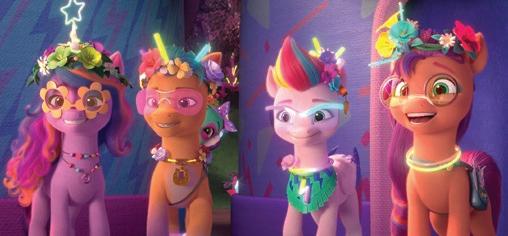

Although linear TV viewing in the US fell to a record low in July (per Nielsen), the medium is still flexing its audience reach in Disney’s latest strategy. Select episodes of Disney+ originals Ms. Marvel and American Born Chinese recently aired on ABC—with the goal being to boost exposure and generate enough interest for viewers to finish watching them on the streamer.
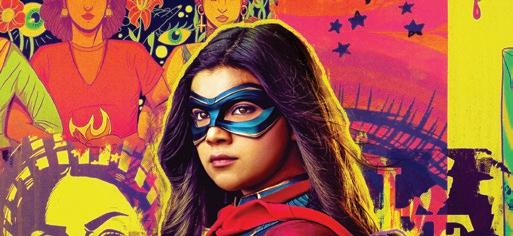
TikTok is giving select kidcos beta access to its new e-commerce platform. Educational Insights is already seeing a sales boom for its viral puzzler Kanoodle, with more than 1,000 creators now selling the game. The toyco sees ASMR, daily challenges and livestreams as the top new TikTok trends for emerging toys.

Airtime down, down under Australian free-to-air channels aired 296 fewer hours of local kids programming in 2022 compared to 2019, when the country’s content quota system started to change. But children’s producers are expecting a better picture to emerge when the government implements new simplified quotas for streamers in 2024.
Nickelodeon and CBS Sports are set to deliver the first alternate telecast of the Super Bowl next year. The aim of the slime-filled broadcast is to introduce younger fans to football. Last year’s Nick edition of the NFL’s Wild Card Game generated more than 41.4 million views—a 35% spike over the previous year.

The podcast industry is listening to what BIPOC kids and families want, and creating content that reflects their language, culture and experiences.
BY: ANDREA HERNANDEZistening to podcasts together became a habit for many locked-down families during the pandemic, but it seems to have become particularly entrenched in BIPOC households, and that’s an opportunity that several companies in the audio entertainment market are starting to navigate.
According to an April 2023 report from nonprofit org Kids Listen (Kids Podcasts in the Age of Screens), 59% of BIPOC families tune in to children’s podcasts almost daily, especially households with kids ages two to five.

Asian families (representing 6% of the survey sample) are the most avid listeners, with Latin American families (7%) not far behind. And in a separate research project, Argentina’s KidsCorp found that 81% of kids from Mexico, Brazil, Colombia, Argentina, Chile and Peru consume podcasts, with three- to five-year-olds emerging as a clear sweet spot.
Anthony Frasier, CEO and founder of podcast production company ABF Creative, believes one reason why family podcast consumption has stayed so strong in BIPOC communities lies in the fact that audio entertainment represents them better than television does. “In the [podcast] industry, independent prodcos are still on equal footing with some of the bigger names, so there’s more diversity and niches than in TV,” Frasier explains. “Podcast creators also still have control over their content.”
Capitalizing on this market opportunity to reach co-listening BIPOC households, ABF is exploring what matters most to this audience. And it turns out that language authenticity is pretty important. The company recently produced a Spanish-language version of its 2021 podcast Charm Words (which offers daily
affirmations for kids) in response to audience feedback from BIPOC families saying they feel more represented when they hear someone speaking their language, Frasier says.
When ABF tested the new version of Charm Words in Spanish-speaking countries before launching it more broadly in December 2022, it found that BIPOC listeners specifically wanted to hear their own dialect in the voice track. “Some people told us they didn’t like the dialect of the person speaking because, for example, people in Mexico speak Spanish differently than people in Puerto Rico,” explains Frasier.
The lesson here is that just because you can’t see faces when listening to a podcast, it doesn’t mean diversity isn’t important—in fact, Frasier believes it’s more important in this space, since kids are looking for representation primarily in the way their favorite characters sound.
But cultural connection is about more than just the language spoken—it also flourishes in the topics a podcast covers.
BIPOC children’s personal experiences and contexts, such as lack of resources and racism, need to be addressed, Frasier says. And identifying which situations have been experienced by kids in more than one part of the world or more than one BIPOC community is also important. “It bridges the cultural gap between kids who have unknowingly gone through the same things,” says Frasier. “Creators must try to find those themes that create cultural connections, but we also don’t want to ignore what makes us different.”
Kids Listen CEO Sanden Totten says that topics reflecting BIPOC families make it easier for adults to have conversations with their kids after listening to podcasts. The org’s 2017 Inaugural Survey found that 73% of kids initiate conversations with their parents based on what they have learned from a podcast, and 59% reenact parts of the episodes.
History, science, mindfulness and meditation podcasts are the most popular among BIPOC audiences, according to ABF Creative. And Kids Listen published similar findings in its Kids Podcasts in the Age of Screens report. This study, in which 21% of families surveyed identified as BIPOC, revealed that kids prefer podcasts that tell stories (55%), have science themes (51%) and explore history (31%).
Co-listening and the overall growth of the podcast market are two trends that make diverse podcasts a smart bet for producers right now, says BAFTA-winning writer and producer Anthony Farrell. Major companies including Disney, Netflix and Warner Bros. Discovery have been moving into familyfriendly podcasts since the pandemic, and BIPOC families are a prime audience for new creators who want to take a more representative approach to the medium, says Farrell.
But as much as BIPOC families want podcasts that represent them, they are also struggling to find them in an increasingly cluttered marketplace. “BIPOC families don’t know where or how to find audio content for them,” says Frasier, adding that ABF is following a publicity plan that includes local media, social networks and influencers that BIPOC kids follow to ensure they discover its podcasts.
Meanwhile, Jessica Ray and Rachel Lacy, co-founders of tech startup KidsPod, launched their own podcast app in June to help families find podcasts all in one place. This product also makes it easier for BIPOC kids to access content from beyond their own country.
The app acts as a hub for podcasts from third-party companies and “puts kids in the driver’s seat to explore their own interests as easily as they can on YouTube, Netflix or any other streaming platform,” says Ray. Aimed at three- to 13-year-olds, KidsPod currently

boasts a library of 300-plus podcasts, including more than 20 that have been translated into Spanish, such as Brains On (APM Studios) and Tumble (Tumble Media). And kids can access all of this content through a free subscription.
Looking ahead, Lacy and Ray want to target neurodiverse, hard-of-hearing and learning-disabled audiences as well. “Once transcripts become an industry standard on RSS feeds, we have plans for a simultaneous reading mode,” notes Lacy.
 The Charm Words podcast now includes a Spanish-language version after BIPOC families said that they feel more represented in their own language
The Charm Words podcast now includes a Spanish-language version after BIPOC families said that they feel more represented in their own language
Kidscreen checks in with new, established and evolving kids content buyers to find out what they’re looking for right now. For more of this type of intel, check out our Global Pitch Guide at kidscreen.com.
BY: ANDREA HERNANDEZreland’s public broadcaster is embarking on a new kids programming strategy that’s all about putting children front and center. “We want to remove the adults or make them peripheral players, and let the kids get in front of the cameras,” says head of children’s and young people’s content Suzanne Kelly, a 15-year RTÉ veteran who has helmed the kids department since its launch in 2017.
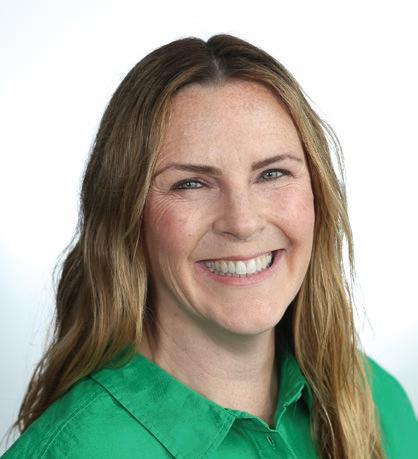
“The old adage ‘content made by kids for kids’ is true, and we had moved away from it at RTÉ,” says Kelly. “Kids know first-hand what kind of stories other children like. Also, kids want to see their peers and be impressed by them in the content they watch.” A good example of this approach in play is Mutiny Group Limited’s 2D-animated series Funny Little Monsters, which airs throughout the day on preschool channel RTÉjr. Co-created by father-daughter duo Paul and 10-year-old Penny Lynch, the series for ages five to seven turns real Irish kids’ drawings into animated monster characters. It has been a success since launching last April, becoming the second most-watched (unique views) commissioned program on RTÉjr.
In addition to operating RTÉjr, the broadcaster runs an RTÉ Kids block for under-12s on the main channel, and all of its children’s content is available on its RTÉ Player VOD platform. The kids team is also experimenting with releasing videos through YouTube, social media platforms and even in-person events. Last June, for example, RTÉ screened episodes of its marquee kids shows and conducted live science experiments at Irish family festivals Bloom and Kaleidoscope. “We’re finding that we’re not getting traction unless we slice our content and put it in different places,” notes Kelly.
At the moment, the broadcaster is most interested in live-action series and films for seven- to 12-year-olds, as well as Irish shows. Its animation slate runs the gamut style-wise, and it’s looking for more 2D, CG and stop-motion concepts. In terms of broadcast-readiness, RTÉ is just as interested in acquiring finished content as it is in co-productions that are at an early development stage.
RTÉjr currently offers 153 hours of content, including Little Moon Animation’s Fia’s Fairies (26 x five minutes), Ray of Sunshine (26 x seven minutes) from Daily Madness and Macalla Teoranta’s Dizzy Deliveries (13 x 13 minutes). Meanwhile, RTÉ Kids has a portfolio of 161 hours, including Mind The Gap Films’ Space Academy (six x 30 minutes), Jam Media’s Nova Jones (10 x 30 minutes) and Will Sliney’s Storytellers (22 x 11 minutes) from Pioneertown.
Future releases

Series premiering on RTÉjr and RTÉ Kids this year include Cartoon Saloon’s Silly Sundays (78 x seven minutes), about three cousins who create memories together during weekend gatherings; the second season of Pink Kong Studios’ Urban Tails (26 x two minutes), featuring animals dancing and singing to songs inspired by ’90s hip hop; and Tailored Films’ Louise Lives Large (eight x 26 minutes), starring a young cancer survivor who does everything she can to not let her disease define her.
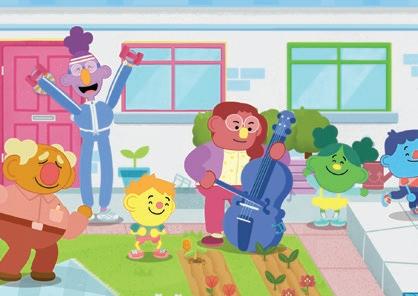
 Suzanne Kelly, RTÉ’s head of children’s and young people’s content
RTÉjr will launch the second season of Urban Tails this year
The RTÉ Kids portfolio includes Jam Media’s Nova Jones
Suzanne Kelly, RTÉ’s head of children’s and young people’s content
RTÉjr will launch the second season of Urban Tails this year
The RTÉ Kids portfolio includes Jam Media’s Nova Jones

you’ve conquered YouTube…now what? If you’re digital-first studio Amuse Animation, you set a new course for 360-degree growth by readying key properties for premium iteration and global franchise success.
After self-funding a whopping 30-plus original preschool properties on YouTube that have generated billions of views since 2016, the Canary Islands-based studio has cherry-picked three CG-animated series from its portfolio that show the most potential for growth, based on years of data collection from YouTube.
The first is Car City, a comedy-adventure series about friendly anthropomorphic vehicles with careers ranging from superhero to inventor. “It was one of our first IPs and was made on a very low budget,” says founder Arthur Lener. “Now, it and its 13 spinoffs have collectively generated 24 billion views across platforms.”

Next up is another vehicle-inspired series: Animacars. but with more of an actionadventure feel. After inventing five hybrids with names like Tigears and Wheelephant, the show’s kid heroes form a rescue team to keep their town safe.
“It’s a successful YouTube-first series that has attracted the eyes of several broadcasters in the past, but at the time we weren’t at the level to push it further,” says Lener. “Now, after examining what worked or didn’t, we have a new value proposition that we feel is very complete in terms of audience and toyetic potential.”
The studio’s third spotlight series is Increditales, a comedy-edutainment sketch show where classic fairytale characters like Snow White and Cinderella live together and are thrust into situations by the series’ narrator, a little girl with a vivid imagination. “There is a lot of depth to the world of the show that is still unexplored, with many
opportunities for diverse, cross-cultural characters,” notes Lener.
Amuse recently presented new-andimproved (in terms of animation quality and writing) versions of all three shows to broadcast and streaming buyers at Annecy, and will showcase them again at MIPCOM in October. The studio is eyeing exclusive and non-exclusive deals, depending on the project and buyer. Outside of Europe, it also sees new audience growth potential in North and South America, Africa and Asia—Amuse recently opened an office in Beijing, headed by distribution, co-production and licensing executive Entin Liu.
According to chief revenue officer Jiella Esmat, the timing for growth could not be better, for a number of reasons.
First, Esmat acknowledges the success of CoComelon producer Moonbug Entertainment for opening minds about what can be done with animated YouTube content. “Moonbug has done an amazing job of demonstrating how content can be taken from YouTube and spread globally,” she says. “It has changed people’s perceptions, so the timing is perfect in that sense, and we’re seeing a lot of YouTube content creators following that strategy now and having great success.”
Interestingly, Esmat joined Amuse’s London office last October after serving as Moonbug’s senior director of distribution
and content partnerships. Her remit now is to drive 360-degree growth for Amuse, while also developing co-production partnerships and scouting for third-party service work. On the service front, the studio has partnered on global hit series, including Molang, Louis and Tulipop, as well as new projects such as Odd-Paw Vet, Hasbro/ eOne’s first-ever digital-led preschool series.
Esmat and Lener stress that the studio has now reached a mature phase—delivering on its initial strategy of building a portfolio of proof-of-concept, cost-efficient shows that allow for quick iterations, ROI and greater visibility. (Amuse has fully funded its own IPs from service work revenue and performance-based revenue sharing from its distribution partners, including YouTube, Amazon, Tencent, Youku and iQiyi.)
The studio is also at a place, both artistically and financially, where it can now offer premium and high-premium projects along with digital-first series.
Lener defines digital-first as self-financed, low-budget, 2D- or CG-animated shows for YouTube. “These feature very simple narratives and allow us to iterate a lot by testing things like story themes and character designs,” he says. “For this type of series, episode 25 will often look completely different from episode one, but that’s OK because it’s all about producing one episode at a time to find your market fit.”
Lener sees premium as high-quality, mid-budget content that is self-financed or co-financed with toy partners. “It is standard TV quality, but it also works for all platforms, including YouTube and Netflix,” he says. “We’re really pushing for this type of content now, but also trying to limit unnecessary costs. A lot of series do too much [in terms of animation quality], so the costs end up being very high, but the performance doesn’t necessarily reflect that.”
As for high-premium shows, Lener describes these as bigger-budget series that Amuse would co-finance with a platform. “These are your typical Netflix or WBD animated series where we would be less concerned about budget because we would co-finance with a platform,” he says.
Looking at the macro-economic climate, Esmat notes that many companies are reducing costs and realizing that preschoolers don’t need to see every strand of hair in animation. “The whole industry is waking up

to the fact that you don’t need to spend as much on animation,” she says. “Those superhigh US$10-million to US$20-million premium animated projects will become fewer and fewer over time.”
Some of the ways in which Amuse aims to reduce costs and manage its workflow speed include the potential use of 2D VFX instead of 3D in certain instances where the results are negligible to a preschooler; minimizing grooming for animated hair, fur and detailed grass; avoiding action in water, rain and snow scenes, and also reflections on mirrors and glass, if possible; limiting sky range/expansive sky shots and retaining a lower-level vantage point for any scenes that may have planes flying overhead, for example; reusing as many [animated] props as possible without compromising the story/ show; and fast 24- to 48-hour approval turnarounds on assets, both internally for Amuse IPs and from clients on production services.
The fact that Amuse’s development and production hub for 2D and CG animation, audio content and gaming apps is located in Las Palmas de Gran Canaria, which offers a tax rebate of up to 54% for international productions, also makes it an ideal partner for service work, says Lener. (Additionally, the Canary Islands have a 4% corporate tax rate, and sales tax is only 7%, with a 0% tax for certain categories related to audiovisual production.)
“Tax credits were obviously a key reason for us to move to the Canaries,” says Lener. “Our offices in London and China are more about finding key local co-pro partners.”
Meanwhile, Amuse’s Paris office mainly manages distribution, co-productions and consumer products. Along with linear, platform and L&M growth, Esmat says conversations are also underway with theatrical companies looking to fill dead space. “Animation is a great pull for parents who are looking to fill time for preschoolers, and preschool content lends itself really well in certain theatrical environments.”
Looking forward, Esmat and Lener agree that the studio’s biggest challenge will be convincing strategic partners to sign on to new original IPs.
“There are so many big content owners out there that when you are one of the smaller new ones on the block, getting the majors to take you seriously can be a bit of a challenge,” says Esmat. “But we are working hard to build a strong story so that the Netflixes of the world will sit at the table with us.”
For Lener, the industry is changing to the point where there is a massive gap in the market. “There is perhaps much more space than before to create the next big global license if you have the right strategy, content and execution. It is a very new audience-centric world where the potential is amazing.”
A group viewing trend and a lack of TV access have led the broadcaster to create houses where kids can gather to watch its content.
BY: RYAN TUCHOWrench public broadcaster TV5Monde wants to bring its French-language content to African kids in a major way, so it has been opening public-access centers where kids can watch its shows and movies together.
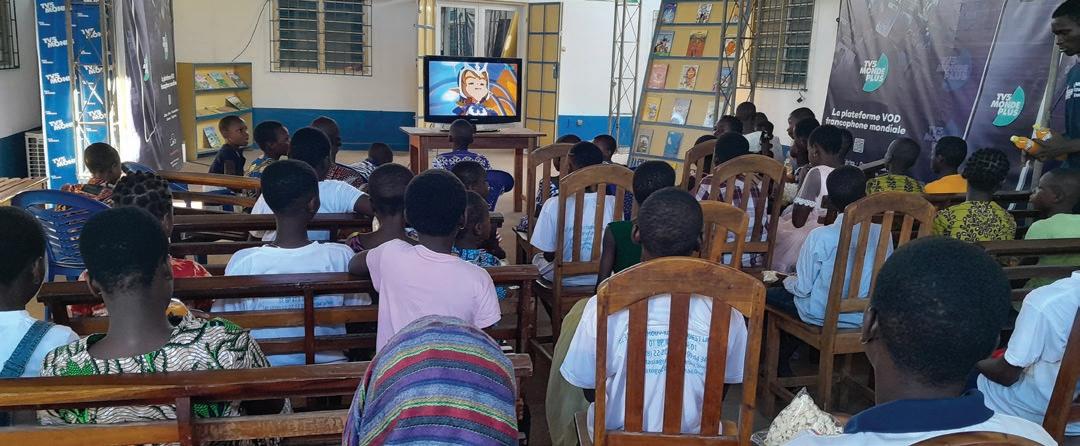
Kids in Africa tend to gather in groups of 20 to 30 to watch TV, but many families across the continent don’t have access to satellite services. So the broadcaster decided to bring its content to more children by creating TV5Monde Houses, outfitted with TVs and computers that kids can use.
The goal of these centers is to connect with kids in their communities, make TV5Monde’s content accessible, and spread the French language in the region, says Patrice Courtaban, the company’s EVP of global growth and business development. At the TV5Monde Houses, kids can watch African shows that TV5Monde acquires and pre-buys, as well as content from partner channels including France Télévisions and Télé-Québec.
Since the initiative got underway in 2004, the broadcaster has opened 14 centers in African countries such as Ethiopia, Rwanda and Nigeria—each of which is regularly used by dozens of kids. TV5Monde is now planning to expand the program by establishing 10 more centers this year (including a first one in Western Africa) and launching new resources to teach kids about the environment and digital literacy.
Locations are chosen with input from local authorities and financial partners, and the houses are run by teachers and NGO execs.
Beyond just getting in front of kids who otherwise wouldn’t see its content, TV5Monde is eager to reach a growing French-speaking population in Africa. By 2050, more than 80% of the world’s French speakers could live in Africa, says Courtaban, citing data from the Organisation Internationale de la Francophonie, a group that promotes the French language worldwide.
“We can bring kids together around new shows and entertain them, and we believe
that’s the best way to learn French,” says Courtaban. “We can also host large outdoor screenings where hundreds of kids can come together. We want more events like this.”
The centers showcase content that has been produced in Africa, such as animated series King Keita (Afrika Toon) and Canadian prodco Avanti Group’s live-actioner Alix and the Wonderful. But they also screen popular international shows such as The Smurfs and Teenage Mutant Ninja Turtles
TV5Monde’s data shows that on average, 50% of African kids ages four to 14 watch its TiVi5MONDE kids channel every week. New carriage deals are helping to increase awareness for both the channel and its content, but it’s the centers that really connect children to the broadcaster.
“The centers can reach many people at once, and we can also talk to people and connect with kids,” says Courtaban. “We can find out what they want to see, and learn [their interests], while bringing the best kids content to Africa.”

andbox & Co. is looking to license third-party content for its brand-new PlayKids+ subscription-based app, aimed at kids ages two to 12.

The platform—which launched in August featuring a mix of videos, games, books, music and podcasts—brings together content from several companies Sandbox has acquired for the first time, including preschool streamers Hopster, Curious World and PlayKids.
Featured on the “super app” are proprietary Sandbox animated series Two Minute Tales
and Love is Love, plus pick-ups like Peppa Pig and Fireman Sam. And the company is looking to license more content to increase the app’s value proposition not just to families, but also to telecom companies looking to attract and retain kids and family customers, says chief commercial officer Shan Eisenberg.
As head of content for Sandbox Kids, Ellen Solberg is in charge of buying for the new app, and she’s looking for programming that spans all demos from preschoolers to teens. The company is open to a variety of content, both animated and live-action, as long
as there’s a focus on learning through play, building empathy and empowering kids.
Sandbox previously operated four main apps—including PlayKids, which has more than two million subscribers who were all upgraded for free to PlayKids+—as well as roughly 20 other products, including educational websites Fact Monster and Funbrain.
The company was challenged by churn because kids aged out of its preschool apps too quickly, and also by the steep marketing cost of promoting so many platforms and products to essentially the same audience. PlayKids+ merges everything together into one offering. “This is the materialization of a strategy that’s been a long time coming,” says Eisenberg. “Telcos want kids, and this can give them an offering that spans from preschoolers to tweens.”
PlayKids+ is ad-free; compatible with tablets, phones and TVs; and it can be used by up to five kids in the same household with individual profiles. But the app’s big differentiator is that through AI, the content kids see on its interface changes as they grow up. This should provide long-lasting value for telecom companies by keeping kids engaged with fresh and age-appropriate content, says Eisenberg.
The new app will help the company reinforce its audience where it’s already strongest: the US, the UK, Latin America and Brazil. But Sandbox is looking to forge new telco and pay-TV partnerships in Europe, Asia and the Middle East, territories where its brands aren’t very well-known. The Middle East is of particular interest for distribution because Sandbox has seen an appetite developing quite quickly there for international content and titles that explore environmental themes.
Sandbox is also going after a new market made up of companies like banks and retailers that can offer PlayKids+ as part of their promotions to draw in families.
“We know how to design a strong user experience for preschoolers, and now we want to build something that works for all kids,” says Eisenberg. “Our next step is looking for distribution partners so we can reach more kids.”
The Brit edtech company’s weeks-old PlayKids+ app amalgamates shows, music and games from several acquired platforms, but it has room for more.

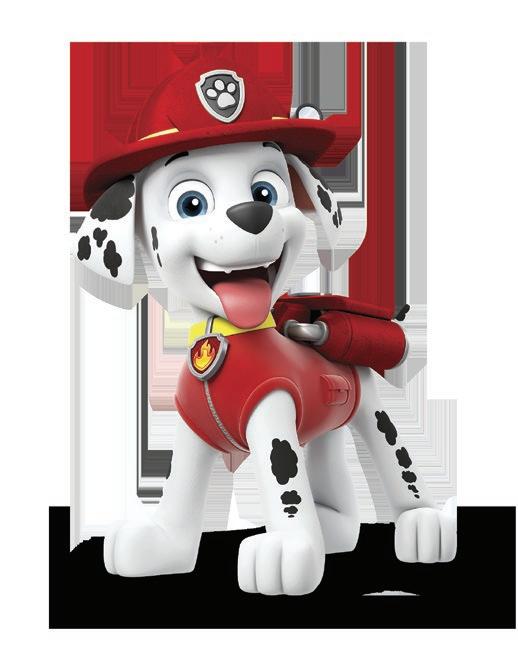



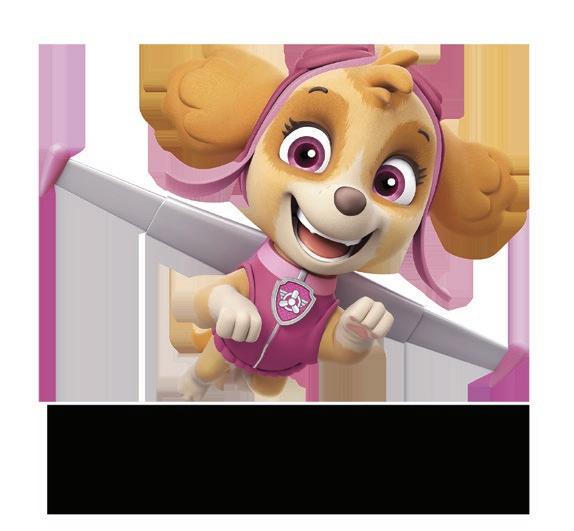
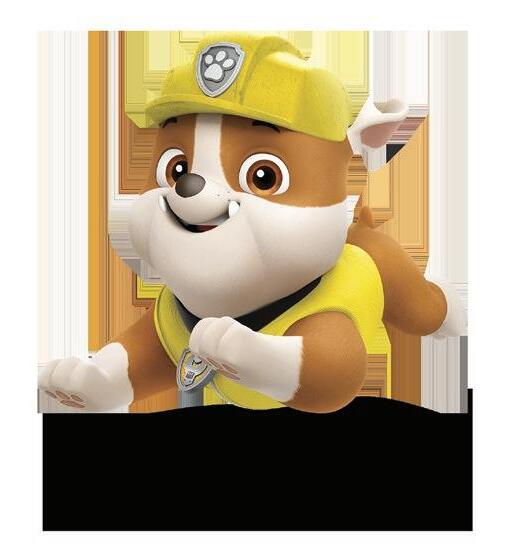
THE BIG GIG: President and chief content officer at Lion Forge Entertainment PREVIOUSLY: President of Imagine Kids+Family

VERSATILE PLAYER: Early in her career, Sperber worked a variety of jobs—from waitress, to limo driver, to a stint in Washington, DC as a speechwriter for then-senator Joe Biden—before moving to Hollywood in 1988 and taking on a brand marketing role at Hanna-Barbera that required working collaboratively with multiple departments. “I learned very early on how all the parts of the business matter.”
EXPERT FRANCHISE-BUILDER: Sperber has managed the expansion of many beloved kids brands, from leading consumer product programs for the Despicable Me/Minions franchise at Universal Studios, to moving the Instagram-born Tiny Chef IP into new merchandise and content streams at Imagine Kids+Family. Now, she’s looking to channel these instincts into navigating an era of uncertain platform strategies. The pendulum has swung back from the abundance of greenlights to buyers looking inward rather than outward, “shifting focus to their own IP libraries,” says Sperber.
LION FORGE 2.0: The current landscape presents an opportunity for producers like Lion Forge that can finance/co-finance their ideas. Sperber and founder/CEO David Steward II have developed a five-year plan for the prodco that’s all about owning as many original IPs as possible through financing, and building a consumer products business around them. “In the kids business, if you don’t have a consumer products strategy along with your creative strategy, you’re missing out on a massive part of the value proposition,” Sperber explains.
She and Steward oversaw a first-look deal with Nickelodeon Animation in July that will provide Lion Forge with co-financing opportunities. Book adaptations will also play a key role as the company assesses in-house comics and graphic novels, plus well-known IPs in the broader publishing space (e.g. a preschool series adapting the 1989 picture book Chicka Chicka Boom Boom is in early development).
DIVERSITY FOCUS: Lion Forge launched in 2019 with the mission of increasing diversity both on- and off-screen. Its first release was the Oscar-winning short film Hair Love, about a Black man who must do his daughter’s hair for the first time. One new diversity-forward project that Sperber is particularly excited about is a Yoruba culture-inspired series for Cartoon Network and Max called Iyanu: Child of Wonder. “Kids are going to love it. It’s in the same vein as Avatar: The Last Airbender—almost like Black anime,” says Sperber, adding that a global consumer products program is in the works to build out the franchise.—Sadhana Bharanidharan
 BY: JIM BENTON
BY: JIM BENTON
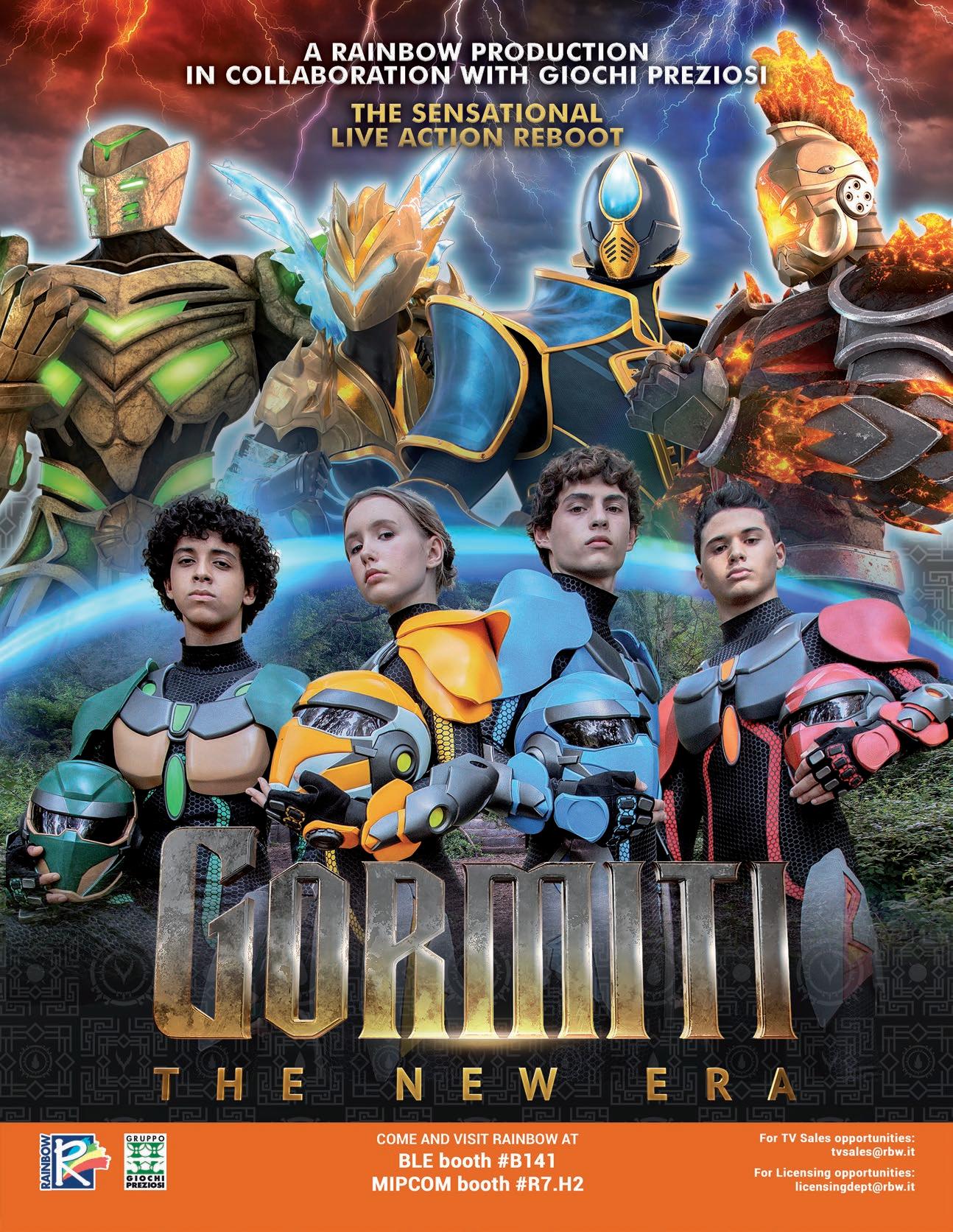
As soaring inflation continues to raise production costs, buyers and producers are taking a closer look at less expensive kids and family programming, which could give a big boost to unique unscripted projects.
BY: JEREMY DICKSONrom Nickelodeon’s iconic trivia/stunt show Double Dare to Fox’s long-running cooking competition format MasterChef Junior, television has had its fair share of unscripted kids and family hits over the years.
But despite the genre’s co-viewing appeal and previous successes, buyers have traditionally chosen to invest more in scripted
content. It’s the same story today, though changes are afoot. In streaming circles alone, the number of unscripted commissions from global SVODs jumped by 35% last year, according to UK-based research firm Ampere Analysis.
Unscripted kids and family content is becoming a more popular option to produce

and buy for a number of reasons. First, it’s generally much cheaper and faster to make than high-budget scripted television and increasingly costly premium animation; second, it often provides co-viewing opportunities to bolster family subscriptions and TV ratings; and third, it’s affordable at a time when most streamers and broadcasters have been cutting their overall budgets to maintain profitability amid high inflation.
“That runaway commissioning the streamers have been doing over the last couple of years has obviously slowed down,” says Kirsten Hurd, commissioning editor at Canadian public broadcaster TVOKids. But she adds that as the industry recovers, unscripted shows will likely become more important for broadcasters and streamers to round out schedules with new programs.
And as animation gets harder to finance, Hurd predicts the industry will move towards lower-budget live-action series. “We always like to have a few unscripted shows in the

pipeline because we know that a lot of amazing animated IPs we are either developing or looking at as potential pre-buys might not get financed for as long as two years—or even see the light of day at all—because financing is getting really difficult.”
Unscripted is also an important genre for TVOKids because it’s well-suited for blending education and entertainment, which satisfies both the channel’s preschool audience and Ontario’s provincial education ministry, which oversees TVOKids.
The channel currently produces two to three unscripted series per year starring real, relatable kids. Hurd points to popular shows such as Apartment 11’s Raven’s Quest, which profiles Indigenous kids across Canada, and spinoff series Sunny’s Quest, which spotlights aspirational first-person stories of Black Canadian children, as great examples of unscripted shows that resonate with the TVOKids audience. “Real kids love to see kids like them[selves] on screen,” she says.
TVOKids is very much aimed at children, without a lot of co-viewing programming. But it sometimes goes beyond this wheelhouse, as it did for Norwegian format adaptation AllRound Champion, a marblemedia production that TVOKids, Canada’s Knowledge Network and BYUtv in the US commissioned in 2019.
Already at the five-season mark, the series focuses on 10 tween/teen athletes who compete at high levels in sports like diving, gymnastics and skateboarding.
“All-Round Champion is one of those shows that I know, anecdotally, families absolutely watch together because it has something for everyone,” says Hurd. “Having Canadian Olympic track athlete Perdita Felicien as the host helped it become a runaway hit, as did inviting other well-known athletes to serve as mentors for the kids. We took a chance on it, and it’s been a consistent, popular show on broadcast and on all of our digital channels.”
Phil Breman, head of live-action series development at Mattel Television, says much of the unscripted genre’s growing popularity can be attributed to families wanting to watch more shows together after the pandemic. Because unscripted content allows for co-viewing, buyers of all stripes are taking advantage, even ones that weren’t primarily interested in unscripted programming.
“As much as the world is shrinking in terms of content buyers, there is a really big demand for unscripted fare in general,” Breman says, adding that Mattel TV’s two biggest unscripted

priorities right now are Hot Wheels: Ultimate Challenge, which had a May 30 premiere on NBC, and Barbie Dreamhouse Challenge, which debuted July 16 on HGTV.
“When you think about Hot Wheels and Barbie, they are that perfect balance of nostalgia and zeitgeist,” says Breman. “They appeal to both eight-year-olds who want to play with the toys and dolls, and also 80-year-olds who did play with them and maybe are collectors now.”
Asked if family audiences are more drawn to higher-budget, shiny-floor competition shows or smaller, unscripted series, Breman says it all depends on the concept. “I don’t think audiences are necessarily sitting down for big and splashy; they just want to be entertained,” he says. “Our Pictionary show doesn’t have those big-budget elements, nor does it need them.”
Robert Fortuijn, head of children’s programming at Dutch broadcaster NPO, also sees a bright future for lower-budget unscripted shows for kids. “There’s still lots of demand for smaller unscripted shows,” says Fortuijn, who oversees NPO’s Zappelin preschool block and Zapp block for nine- to 12-year-olds.
Nearly 70% of Zapp’s lineup consists of unscripted content, and NPO made a switch

two years ago to only make family-skewing TV shows for the block. “When we don’t [skew to families], we notice that it doesn’t work anymore,” says Fortuijn. “For kids-only content, we have our YouTube channel, our app and social platforms; but if it’s TV, it is always family viewing.”
And like TVOKids, NPO is focused on providing unscripted shows that detail the real lives of local kids. “We see that our audience expects this of us. Plus, in Holland, we are the only broadcaster that doesn’t have any
commercial ties…so for unscripted, this fits us like a glove.”
Looking at other screen opportunities for unscripted kids content, social platforms such as TikTok, Instagram Reels and YouTube Shorts are providing new ways for broadcasters like TVOKids and NPO to connect and engage with their audiences.

And the value of replicating social media video—especially content where kids watch
other kids and adults do things—is growing for TV producers. “This could help explain where a lot of the growing interest in the unscripted kids space is coming from,” says Gary Pope, CEO of family research agency Kids Industries.
TVOKids, for one, has found success with Know Brainers, a digital-first, docu-style series for tweens and teens that premiered in October 2022 and recently won Best Unscripted Live-Action Program for ages nine and up at Canada’s Youth Media Alliance 2023 Awards of Excellence.
The show features the former hosts of TVOKids’ daily live show The Space as curious amateur investigators who solve problems and conquer challenges using DIY experimentation and inquiry-based thinking related to STEAM education.
The in-house YouTube series also launched on TikTok, but when Canada banned the Chinese-owned video-sharing app from all government-issued mobile devices in February, TVOKids pivoted its platform focus for Know Brainers to just YouTube, YouTube Shorts and Instagram Reels.

“TVOKids hasn’t tried to hit that tween and teen audience for a long time, so Know Brainers is a new venture for us,” says Hurd. “We are really focusing on YouTube Shorts right now because that is the type of content [one-minute-or-less vertical video] kids are really looking for.”
For TVOKids and Know Brainers executive producer Alex Sopinka, the show’s longer eight- to 12-minute YouTube episodes are a lot easier to create than one-minute-or-less vids for YouTube Shorts. “In a minute-long video, we need to include some education, but then no one wants full educational content. So we need to make it fun, but then we also want to develop our hosts, so we need some of their personality, too,” he explains. “Trying to fit all of these things into a one-minute video is one of the hardest things to do, and we are still learning.”
As for NPO, it has a TikTok hit in No Label For Me, a docuseries about teens who feel pressure to fit in with conventional ideas of gender roles. Each six-minute episode gets uploaded daily after school, and it has so far been a success with kids, according to Fortuijn. “It’s a nice counterbalance to talk and inform, instead of judging each other. And as a public broadcaster, it’s nice to have solid social content on TikTok.”
TVOKids’ digital-first docu-style series Know Brainers is focusing primarily on YouTube, YouTube Shorts and Instagram


a region with a long history of storytelling and diverse subcultures, the Middle East looks poised for a transformational decade in media creation and consumption, thanks to cultural changes and an increasing digital influence.
In a July 2023 report, Indian research firm Mordor Intelligence estimated that the region’s entertainment market will be valued at US$61 billion by 2028 (up from US$39 billion currently).
Driving this growth are established markets like Egypt, as well as burgeoning ones such as Saudi Arabia, which has recently rolled out several initiatives to build up its screen sector. The Saudi Film Commission launched a 40% cash rebate last year to support domestic production. And earlier this year, the Saudi Cultural Development Fund unveiled a US$234-million Film Sector Financing Initiative, which is open to local and international prodcos working in the regional industry.
So what is it like to work in the kids content business in this market right now? The
experience varies about as much as diversity does across the Arab world—stretching from the Levant to the Gulf.
Maya Zankoul runs a YouTube channel for preschoolers called Lila TV, which features musical Arabic content produced by her Beirut-based animation studio, wezank. The channel recently surpassed a million subscribers—a hard-earned triumph during a difficult period in Lebanon.
The country has been in the midst of an economic crisis since 2019, and the Beirut port explosion in 2020 damaged its infrastructure and access to resources. “I envy how some regions have support and funding, because here, you’re really on your own,” says Zankoul, adding that the government is only able to provide an hour or two of electricity per day—a challenge her team has navigated by switching to solar power.
The concept for Lila TV was born when Zankoul noticed an underserved market of parents who wanted to teach their children
Lebanese Arabic (a variation of Levantine
Arabic), but couldn’t find much kids content in that dialect. By acquiring the rights to classic rhymes in Lebanese Arabic and reproducing them for the channel, wezank has scored a hit with local families and the Lebanese diaspora around the world, says Zankoul.

While linear channels like OSN TV Kids and MBC 3 continue to be popular in MENA, platforms such as YouTube have also risen up as strong competitors, creating new opportunities for Arab producers and consumers alike.
Cynthia Madanat Sharaiha is the creative director at Digitales Media, the Jordanian prodco behind a popular digital series called Our Family Life that’s available on a same-name YouTube channel (2.14 million subscribers). The family-friendly shorts explore the daily life of an Arab family in a mixed-media format, with 2D characters embedded in a live-action backdrop, and featuring real Jordanian locations. While most of the episodes are lighthearted, Sharaiha says a key factor in the show’s
popularity is its willingness to tackle tough topics from the real world, such as bullying and women’s rights.
It’s a strategy she’s now applying to film with Digitales Media’s latest project, Saleem This CG-animated feature has a fun premise about a nine-year-old boy on a treasure quest with his friends, but it also deals with mental health, grief and displacement. “Animation is a disarming tool. You can highlight these hard issues, but in a delicate way that’s palatable for kids,” says Sharaiha. She adds that Digitales is also working with child psychologists and therapists to develop children’s mental health resources based on the film.
Saleem was an official selection at Annecy this year, becoming the first-ever Jordanian film to make the cut and giving Sharaiha another reason to feel hopeful about the global appetite for Arab content. “We have so many subcultures and a history of rich storytelling, and there’s also curiosity out there for stories reflecting life in the Middle East,” she notes.
Making kids programming more exportable is something that larger producers in the region are certainly taking into consideration.
Abu Dhabi-based Bidaya Media, the studio behind popular CG-animated series Mansour, is mapping out a strong international strategy for its upcoming reboot, The Adventures of Mansour: The Age of A.I. Canada’s Epic Story Media recently signed on to handle licensing and distribution outside MENA and China. And the series will launch with Arabic and English versions, which was factored into early development and writing. “We had to make sure the [dialogues] worked for both versions—sometimes, a sentence could sound good in English but horrible in Arabic, and vice versa,” says Bidaya CEO Nabil El Jisr.
According to El Jisr, it was natural to expand from a single market focus once Bidaya saw the Mansour IP’s YouTube metrics, which clearly demonstrate interest from around the world and not just in the UAE. In fact, he recalls that most of the YouTube viewership
for Mansour came from other markets, such as Iraq and Egypt. Keeping this in mind, the Arabic version of the reboot will encompass a mixture of dialects to appeal broadly to pan-Arab audiences. “We not only have UAE, but also dialects of Saudi, Iraq, Yemen, Egypt, Sudan and more,” he says.
Indeed, just as YouTube has helped new IPs break out, it has also helped established brands like Mansour gauge fan demand and determine when a story is not yet at its end. “We built a YouTube channel for Mansour that generated 392 million hours of watch time and 2.5 billion views,” notes Bidaya’s creative director, Adam Khwaja. “It’s fair to say that had we not seen the enormous numbers on YouTube, we wouldn’t have rebooted.”
The Adventures of Mansour: The Age of A.I. features not only a 2D animation upgrade, but also more ambitious and relevant storylines dealing with things like AI and climate change. “We’ve preserved its cultural identity [while] clearly reflecting a more modern Arab society, rather than an outdated stereotype,” says Khwaja.
For example, one episode will show the main characters using futuristic technology and exploring outer space, while retaining core cultural elements like traditional attire, regional cuisine and Arab family dynamics. This blend helps refresh the IP for today’s digital-native tweens in MENA, while also priming it for a wider international reach, notes Khwaja.


Even if the Middle East market is on the cusp of breaking out globally, kids execs in the region say that their corner of the industry still needs a lot more holistic growth and development. Khwaja highlights a lack of animation schools that can impart the right level and depth of expertise. “That’s something that has been kind of missing from the ecosystem,” he says. Digitales Media’s Sharaiha agrees that education quality has room to improve, especially since the demand is there. “We’ve been seeing more youth interest in studying fields like animation, gaming and film production.”
Kristina Kleymenova, who co-founded Dubai-based North Wind Studio, says that beyond funding, another major challenge is difficulty in securing greenlights. “Many local broadcasters tend to play it safe by airing what’s already been successful internationally, rather than taking risks on original programming,” she says.
Kleymenova has spent six years trying to get her studio’s first project off the ground—a
swashbuckling series called Ali and The Secret Gate, about a 14-year-old boy who opens a gate into a parallel fantasy world.
Targeting the eight-plus demo, the toon’s title was specifically designed to signify an aspirational hero with an unmistakably Arabic name. “Western media has often relied on the stereotype of a ‘bad Arab’ to create a villain that everyone can rally against,” says Kleymenova. “We want to counter that.”
She urges more commissions on the home turf for kids content from smaller creators in addition to the big players, and hopes to see a decline in overt and covert censorship, influenced by cultural and religious factors.
Similar to Bidaya, the fledgling North Wind Studio is cooking up a global content strategy, with projects that revolve around Arab characters but also feature multicultural representation. “Countries like the UAE have a 90% expat population, embodying the reality of today’s globalization. It’s a cultural melting pot in Dubai, where kids navigate numerous cultures and languages. The questions and struggles they face are incredibly unique, and we want to bring those experiences to the screen.”
International companies are also peering into the Middle East market and looking to make a mark there.
Germany’s YFE launched its Fix&Foxi kids channel in the MENA region in 2014, mainly airing European titles from its own library, like Bob’s Beach and Papyrus. Now, it’s looking to broaden its catalogue by licensing more regional third-party content. “We would appreciate working with local producers,” says COO Bernd Wendeln. “Our advantage is that we can offer both linear channels in Arabic and English, as well as provide full on-demand rights, not just catch-up.”
Animated comedies/adventures with likable heroes have been a reliable bet for the channel’s MENA audience, especially shows with strong family values, he notes. Looking ahead, YFE is seeking content that fills certain genre gaps. “We are looking for live-action formats [for] older kids, as well as preschool content, which may be non-dialogue.”
Cross-cultural partnerships are also on the rise among prodcos. A major animation studio in India recently inked a deal with North Wind, although the details are still under wraps, says Kleymenova. It’s a significant move in support that brings the studio one step closer to opening the “gate” into production, funding and a potential greenlight.

You are invited for a preview of

SATURDAY OCTOBER 14, 2023

FROM 4:00 - 4:30 p.m.
JW MARRIOTT HOTEL, GRAND THEATRE
The famous Dutch tomcat who first appeared in Sesame Street in 1978 becomes a MOVIE STAR!

He’s a funny, inquisitive, adventurous and slightly mischievous ginger TOMCAT



4 x 60 min film | each film available as 13 x 5 min series
2D hand-drawn animation

Based on bestselling children’s books New footage available from MIPJunior

Funny active adventures; sing, dance, clap, stomp along Preschoolers & toddlers | 2 – 6 years

1st film completed by Summer 2024 | 2nd film by Winter 2024
A Phanta Animation, BosBros and Eyeworks Production


ne of the primary goals of every toyco is getting its new products stocked at big-box retailers, but the retail landscape has changed dramatically post-pandemic. Walmart, Target and Costco are more fickle than ever about giving brands even a square inch of shelf space unless they feel absolutely certain that the product line will be a home-run in the toy aisle. So, with no room for risk, toycos and
emerging IPs are biting the bullet and focusing on new sales channels.
This retail strain is being felt industry-wide, with even toy giant Hasbro struggling to get its products on shelves at Walmart in time for the theatrical release of Dungeons & Dragons: Honor Among Thieves last March. At Kidscreen Summit 2023 in February, Casey Collins, the company’s head of global licensed consumer products and business development, discussed
the need to stock its new lines at lower-tier retailers and e-commerce platforms, including book retailer Barnes & Noble and DTC platform Hasbro Pulse.

Collins sees new opportunities for toycos emerging in the value retail channel, where popular chains like Dollarama, Dollar General and Dollar Tree are starting to move away from low-quality merchandise to carrying officially licensed products. Business at these stores is at an all-time high as consumers worldwide battle with high inflation and the rising cost of goods. Last year, Dollar Tree opened 455 new stores across the US, and it has plans to open 650 more this year to satisfy customers’ growing need for bargains.
With 30,000 value stores currently operating in the US, matched by an equal number in Europe, Toronto’s Spin Master is diving headfirst into this channel with the development of a new value-oriented product mix for shoppers.
“In the past, Spin Master always viewed value retailers as a closeout destination for products that didn’t sell well,” says Doug Wadleigh, head of global toy brands. “But now that the value channel has become
The retail landscape for toycos is shifting away from mass-market retailers and towards building alternative channels to meet consumers wherever they want to shop.
less stigmatized and is focusing on delivering stronger brands to consumers at a greater variety of price points, we’ve started to look at value as a key destination for our properties.”
Several of Spin Master’s top-performing brands are set to hit dollar store shelves this year, including Tech Deck fingerboards, Bakugan collectibles, PAW Patrol bath toys and Monster Jam vehicles. “We’re launching these brands at value because we believe this is a great brand-building opportunity for us,” says Wadleigh. “What’s most exciting for us is that value retailers are much more open to expanding the range of their price points. Most of the products are between US$1 and US$2, but we also have a healthy chunk of products under US$5, and we’re even stretching to see if we can extend that to US$10 in some cases.” Value retailers are in an experimental phase, testing out in-store promotions and seasonal product lines to help create new growth opportunities and expand into new price points, he adds.

A key challenge for Spin Master is the need to finely balance multiple product development mindsets between channels—while big-box retailers expect innovative toys infused with new tech and gimmicks to drive sales, success at value retailers hinges on finding new ways to create lower-cost items while still delivering great play value for kids.
Another newcomer that sees the value in value retailers is BBC Studios, which used the runaway success of preschool show Bluey as its gateway into the dollar channel. Suzy Raia, SVP of consumer products and business development, says the company slowly expanded into Dollar General stores over the course of 12 months, incrementally adding new products to its range so as not to overwhelm consumers too fast.
“We started with toys, with our master toy partner Moose Toys creating some figures and books that were packaged together for preschoolers in the channel,” says Raia. “Once we nailed down the price and saw that value consumers were just as interested in the property as our mass-market ones, we knew that we could start to grow the line.”
Since getting into the channel, BBC Studios has expanded the Bluey products available at value retailers to include party goods, seasonal items and a new line of consumables that’s set to launch throughout the year. And more retailers in the space have also begun to carry the line, including Family Dollar, Five Below and Poundland.

Raia says that while other brands in its portfolio—such as Hey Duggee and Doctor Who—have value channel potential, it made the most sense to start with Bluey because the IP appeals so widely in the kids and family demographic. “Bluey is a show that resonates with people from all economic backgrounds. We need to be in this channel—and every other tier of distribution—so that all of our consumers have a product mix that works within their price-point comfort zones.”
While value retailers are the hot new channel on the block for evergreen brands, emerging IPs struggling to find an audience are likely to turn towards hobby and specialty channels to start building a community of loyal consumers. Since launching in 1995, French games publisher Asmodee has really focused on developing its relationship with independent hobby retailers and game stores. The company is one of the leading distributors of board games worldwide, publishing tabletop classics like Ticket to Ride and Catan, as well as licensed games including Stranger Things: Upside Down and Marvel Champions: The Card Game
Currently, Asmodee has a mix of 42 sales reps and support staff servicing the hobby and specialty channel, and a much smaller team of 10 managing its business at mass retail.
“It’s a very different kind of relationship in terms of how you work and sell between these channels,” says Julien Sharp, Asmodee’s GM in the US. “Mass retailers want games that sell quickly and are easy to explain, but a hobby store is usually owned by someone who is a gamer. They know firsthand what’s trending and what’s popular in the space, so you need to bring in a certain kind of sales rep who knows the mechanics of each game.”
Sharp explains that Asmodee’s reps make weekly calls to thousands of stores to develop relationships with owners and learn about each one’s clientele. And the goal of these calls isn’t to stuff stores full of every product Asmodee produces, but rather to curate a list of games, expansions and accessories that are the best fit for each store’s players.
For example, some stores prefer to carry only miniatures games like Star Wars: Shatterpoint and Marvel: Crisis Protocol, in order to also sell paints, brushes and terrain that players can use to customize their figures and tabletops. Meanwhile, other hobby stores prefer to purchase a wider range of cooperative and competitive board games that players can collect for game nights with friends and family members.
Next year, Asmodee’s Fantasy Flight Games (FFG) division will roll out its latest trading card game, Star Wars: Unlimited, to retailers worldwide as it looks to take a chunk out of the booming TCG market. The first 200-card set will feature new artwork showcasing the
Bluey toys, party goods, seasonal items and other consumer products are now available at value retailersfranchise’s iconic heroes and villains from a galaxy far, far away. And the game’s hobbyist player base will get first crack at all new releases before the cards hit mass retail.
“Hobby retailers are the lifeblood of a TCG experience,” says Chris Gerber, FFG’s head of studio. “They are the hub that communities form around, and their importance for Star Wars: Unlimited is no different.”
While the Star Wars franchise has generated a broad multi-generational audience since launching in 1977, players need more meat on the bone than just a beloved IP to get them to commit to a new TCG. In response, FFG is developing and launching an organized play program alongside the game’s first starter decks and booster set. It will feature tournaments, prizes and a variety of play formats to attract both competitive and casual players.
This sends a positive message to retailers and consumers that the company is supporting the Star Wars: Unlimited community long term with new products and releases, which helps to quickly build loyalty, says Gerber.
“To be transparent, some of our competitive games have missed this mark, and our review of those experiences has taught us how important [organized play] is. I also think that limited-play formats—in which players open a limited number of packs and create decks with only what is available to them—wasn’t natively built into our previous TCG products. From day one, we made them a part of the core design for Star Wars: Unlimited because they are great ways to
engage new and/or less experienced players, while also providing a different challenge for competitors. And from a retail standpoint, these formats provide stores with a built-in opportunity to move stock and engage customers simultaneously.”
While collectibles giant Funko has had success in both value and hobby channels, its sales sweet spot is now in the DTC space— specifically its e-commerce shop. According to the company’s Q1 2023 financial report, DTC sales grew by 61% to US$41 million compared to the same quarter last year. This accounts for 17% of the toyco’s total Q1 2023 net sales, beating out its biggest brick-andmortar retail partner Walmart (11%).
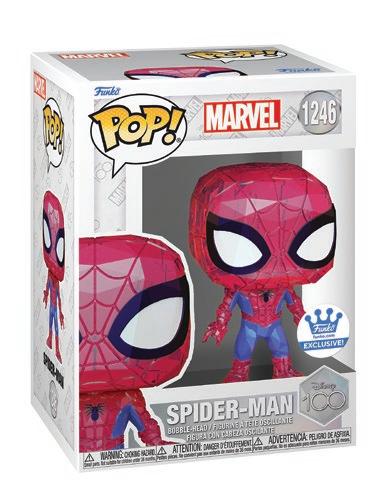
Funko began developing its DTC business in 2019 after opening flagship stores in Everett, Washington and Hollywood, California. The goal was to replicate the in-person shopping experience online, and also maintain full control of inventory and exclusive product drops.
“It gave us an opportunity to get closer to our consumers by having that direct oneon-one relationship with them,” says Funko’s SVP of DTC, Johanna Gepford. “In phase one of building the site, we focused on doing limited-edition drops for events like San Diego Comic-Con, but that wasn’t going to cut it. That took us on a two-year journey of building out our vision of the site and having more of our evergreen products on there to drive traffic.”

Gepford adds that the site also gave Funko the ability to collaborate with consumers,
which let the audience identify issues and propose solutions for improving the shopping experience as updates for the DTC business continued to roll out.
“We surveyed our users constantly, asking, ‘What is the most important thing to you?’ When we started tackling those issues on the roadmap, one of the biggest challenges was the shipping box. Most of our consumers are avid collectors who keep their Funko Pop! products in the box, so arriving undamaged was a top priority. We had to work with packaging engineers to create a new wrapper to make sure each figure was delivered in pristine condition.”
In March, Funko launched an overhauled DTC site, adding categories for sister brands like Mondo and LoungeFly, along with a loyalty program to entice new and returning customers to shop online. But the company isn’t interested in copying a simple “buy 10, get one free” loyalty model where customers rarely use their points, says Gepford.
“Our loyalty program is based on experiences and opportunities that you can’t really buy with money. We’re looking at using your points for Comic-con passes, entering into draws for signed items and first opportunities at product drops—all of which engage the consumer on a more meaningful level.”
The next step for Funko’s DTC business is to expand onto e-commerce platform Ebay, where it plans to sell its high-end collectibles and provide a branded marketplace that will help reassure consumers that they are buying genuine products instead of counterfeits. In 2022, Ebay acquired a US$263-million stake in Funko in order to become its preferred secondary marketplace for consumers looking to sell pieces from their collections, as well as to help expand the collectible giant’s distribution in more international markets.
Retail channels are continuously evolving, giving toycos and emerging IP owners more options than they’ve ever had before when it comes to planning consumer products strategies and reaching target audiences. Alternative retail channels all focus on building community and growing brands through word of mouth, which can be the key to getting big-box retailers on side. But toycos will still need to invest significantly, not just in developing product lines, but also in building a satisfying shopping experience for their loyal fandoms.
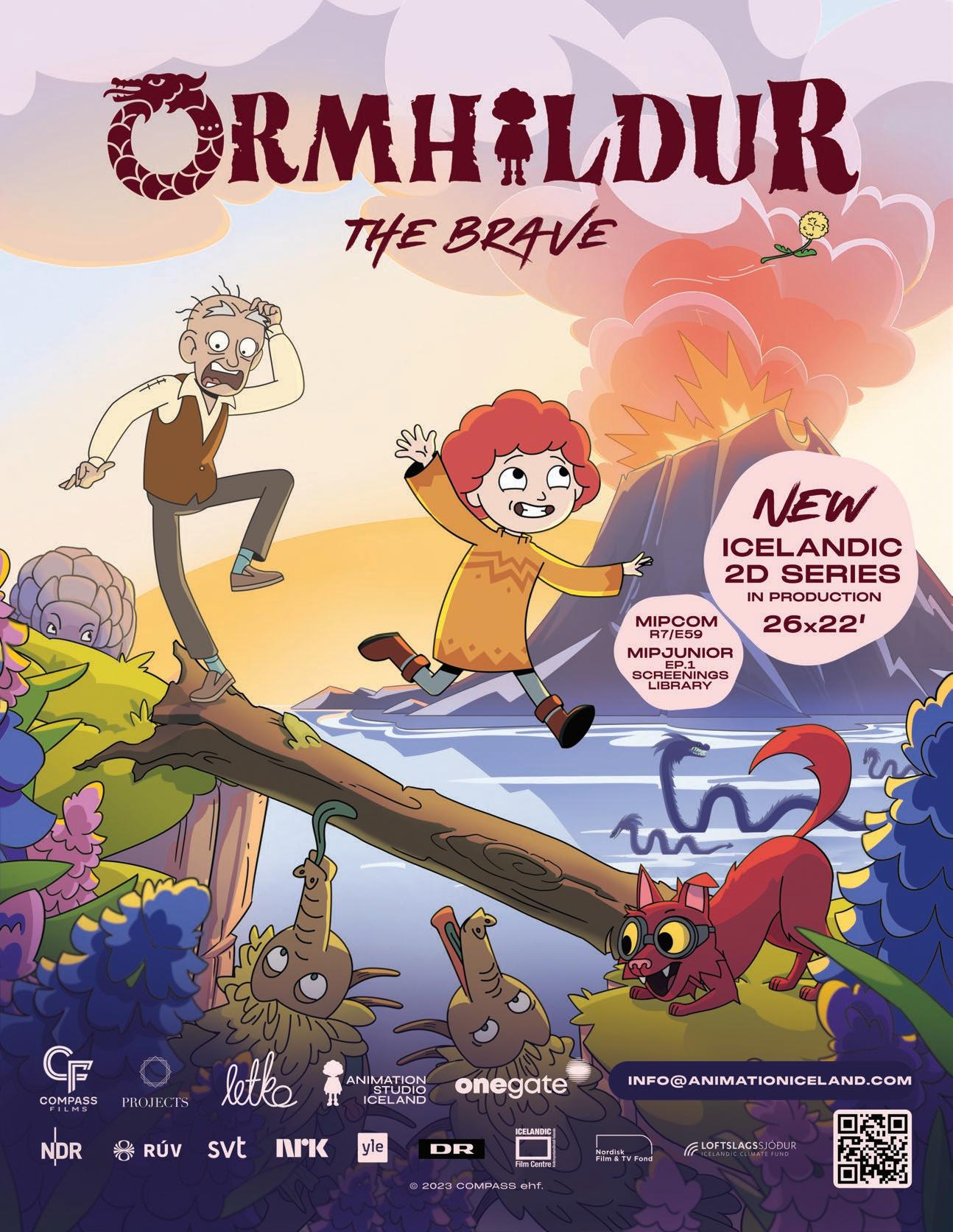
arlier this year, The Toy Association unveiled its toy trends for 2023, which include an expansion of fandoms into lifestyle and a surge in tween and teen toy buyers. But topping the list is a move towards “back to basics” toys that encourage selfcare, social connection and social-emotional learning (SEL).
“In the toy space, [the self-care concept] is taking shape across a range of products that instill healthy habits—from mindfulness and good sleep habits, to increased social-emotional awareness through nurturing play—as well as toys that introduce kids to new hobbies and help families find joy through classic play,” noted The Toy Association.
It’s a trend born from the effects of social distancing on children during the pandemic, when 77% of parents used toys to help with social-emotional learning—and most are still doing so (92%), according to a OnePoll survey of 2,000 US parents commissioned by The Toy Association in late 2022.
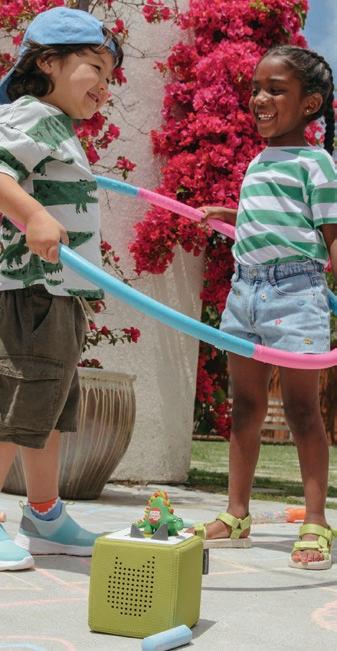
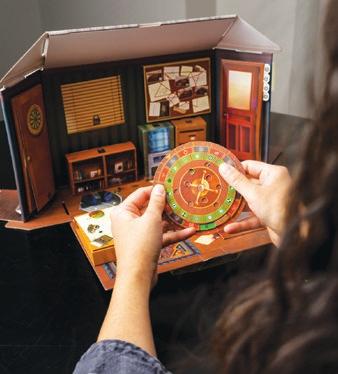
Many children continue to struggle with social interactions in the post-pandemic world, says Jessica Jama, a child development specialist and product manager with hand2mind, which makes educational toys and teaching tools for preschool and elementary school kids.
“So many of them don’t remember being in a classroom,” says Jama. “They don’t remember being with people outside of their core family unit, so they don’t know how to enter into play. If two other kids are playing a game, they don’t know how to say, ‘Hey, can I play with you?’”
Child, youth and family therapist Tania Da Silva agrees. The clinical director at Torontobased Behaviour Matters says staff at her mental health clinic have seen a significant increase in developmental delays and mental health issues, “including social-emotional struggles.”
In October 2022, toy company ThinkFun published a white paper that identified eight skills kids need to learn to build mental, emotional and social health: problem-solving, perseverance, adaptation, conflict resolution, self-regulation, self-advocacy, cognitive skills and communication strategies.

Penned by resiliency expert Dr. Deborah Gilboa and Rachele Harmuth, head of Ravensburger’s ThinkFun toy division, the paper cites data showing that parents recognize the urgent need for tools to care for mental health throughout childhood. Meanwhile, 44% of teenagers reported feeling sad or hopeless in 2022, according to the US Centers for Disease Control and Prevention. And the Pew Trust Research Center published data showing that 67% of parents wish they’d been more vigilant about their child’s mental health from the beginning.
Play is one way for kids to decompress and deal with stress and anxiety, says Da Silva. “[Play that] facilitates release or regulation can have a significant impact. Ultimately, being mindful of the benefits of play and toys, and considering how they can help our children develop social-emotional skills, is crucial.”
Overwhelmingly, toy designers are going analogue to meet the growing need for toys that facilitate self-care. Da Silva points out that along with books and anything related to music and art, there is also growth in the games and activity cards segments.
For Jama and the team at hand2mind, the focus is on hands-on learning…literally. “Most of our products are very tactile,” she says. “It’s about getting kids excited about learning, [but] not realizing that they’re learning as they play.”
Take, for example, hand2mind’s socialemotional task cards, which come in sets for kids ages three-plus and eight-plus. Children work through the 64-card deck while
For kids with sensory triggers, squishy items from hand2mind always come with tongs Some Tonies content helps kids learn healthy habitsexploring concepts like collaboration, kindness and empathy, as well as tasks ranging from writing exercises about emotions, to breathing exercises for self-regulation.
For ThinkFun, one of the most popular product categories is games, which range from brainteasers, to interactive group play products, to escape games for older kids. “There’s a real place for, and a real value in, games that promote self-advocacy and involve storytelling,” says Harmuth. “It’s hugely important for kids to be able to explain what’s happening to others and what’s happening to themselves.”
Significantly, the company’s research shows that playing with toys that simply comfort kids isn’t enough to help them develop self-care skills. “It brings them back to a baseline, but it doesn’t make them stronger,” explains Harmuth. “We need to understand the skills that build resilience— not just [what helps with] comfort and recovery from stress and challenge.”
In order to build resilience through play, many of ThinkFun’s games are designed to get progressively more challenging while helping young players understand that challenge doesn’t equal defeat.
The product development behind these toys is multifaceted. Tonies, for instance, are both hands-on and high-tech—little figurines equipped with RFID technology that each hold a specific audio collection of songs and stories, like physical playlists for kids. And the Toniebox is a speaker box the figurines sit on—soft enough for a young child to manipulate and carry.
But beyond the physical and the technical, a key aspect of development lies with the company’s in-house content team. “We license from everybody—Dr. Seuss, Disney, Sesame Street—as well as some of the more specific audio creators like Calm [the mindfulness and meditation company],” says Drew Vernon, marketing director for Tonies USA.
Targeted at kids ages three and up, The Calm Tonie offers breathing exercises, meditation modules and sleep stories. (And it’s just as useful for adults—one reviewer on the US site says, “My grandmother loves it.”)
Other research for content development includes analyzing children’s daily schedules and needs. “It’s time to wake up, time to get ready, time to go to school, time to play, time for recess, time to get your
wiggles out, time to calm down,” explains Vernon. When it comes to self-care content, the Tonies team considers everything from kid-friendly white noise and waterfall sounds, to the programming of Calm.
For its part, the hand2mind team approaches toy development with an understanding that everyone has a special need—“whether that special need is that you like to wear socks all the time, or maybe you don’t like to touch things that are sticky,” says Jama. “If we make a sensory product that [users] would squish with their fingers, we also want to provide a stylus or something that can be used instead.”
Because children are still learning self-care mechanisms, hand2mind’s toys provide multiple ways to achieve a goal. “As adults, we have methods for calming ourselves down—if you have a rough meeting and you need to take a minute, maybe you go for a walk outside—but that’s not always natural for a child to know how to do,” explains Jama. “So we give them different options to help them find the right approach.”
Jama, Vernon, Harmuth and Da Silva concur that this trend towards self-calming toys is in its early days, with much opportunity and growth yet to be realized.
When it comes to finding a niche, Harmuth points to the four play patterns identified in ThinkFun’s white paper: problem-solving and perseverance; storytelling; progressive challenges; and bringing children and adults together.
“We do two of those things fantastically well,” she says. “We’re great with problemsolving, and with increasing challenge over the duration of play. But we are not a brand that focuses on storytelling. And while we have some products that really bring adults and kids together, we also have a lot that are single-player.”
Instead of one company trying to do it all, self-care through play should be an industry-wide movement, Harmuth adds. “We are really proud of the pieces we create that fit into these areas and build these skills, but we’re one piece of a pie. This is way bigger than one brand or one company. It has to be a wider picture of looking at play through a lens that helps us understand how we can develop products and play patterns that will build resilience overall.”
Here are some of the companies currently producing toys in the self-care and SEL category.
Among its diverse range of SEL toys, hand2mind’s sensory fidget tubes are designed to help older children achieve a state of peace and calm.
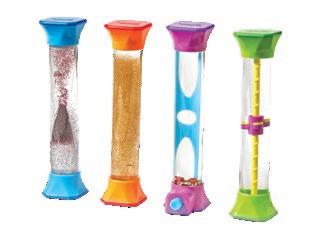
The toy giant’s well-known game Perfection helps with shape recognition, while also making “failure” fun and helping to teach resilience and perseverance.
Manners&Co.
Table Talk is a card set of conversationstarters that guide children and families through discussions about school, friendship, the world and the self.

Kimochis are plush toys and characters that help kids learn to communicate their emotions. There are also Feel Guides that prompt feeling identification.
MindWare’s Feed the Woozle is a board game that helps kids learn cooperative play.

How toymakers are keeping legends alive through audience ownership, reimagined play patterns and delivering the “super-wow.”
BY: CHRISTOPHER BYRNEhat is it that keeps some properties exciting and in-demand for decades, while others fade away or fail to take off when reintroduced? In a marketing and merchandising world that’s cautious at best, merely bringing something back is the kiss of death for a property. Simply put: Nostalgia is not a strategy. It may work in the kidult market, but kids don’t care what their parents liked. You have to prove yourself to them from scratch.
It’s imperative to understand how the market has shifted, how consumption has changed, and probably most importantly, how engagement has evolved. In the contemporary market, your property doesn’t belong to you. Sure, you may own the copyright and rake in the royalties. But the real value lies in the hearts and minds of your audience, and how they engage with your property and express themselves through it. Social media, and especially TikTok, lets your audience “own” a brand and continue to drive awareness and preference.
It’s also critical to keep innovating. The last thing you want to do is introduce a new movie or TV show that lets fans simply dust off the toys and merch they bought last time. The challenge is to continue to evolve and
expand while preserving the essence of the characters that first made the brand a hit. Then, let imaginations run wild—for both your team and fans.
To see how this works, look no further than the Minions (pictured). First introduced in 2010, the little yellow creatures became an international sensation. Classic comedy combined with the cute factor appealed to virtually everyone. “The Minions are really an all-audience brand, as illustrated by last summer’s viral #gentleminions TikTok trend,” says Joe Lawandus, SVP and general manager of global toys and hardlines at Universal Products & Experiences. “Younger fans engage with the franchise through toys, but we also attract a significant Gen Z demographic through our streetwear collabs (e.g. last summer’s Lyrical Lemonade, as well as sellout collections with Reebok and Verdy).

The Minions’ irreverent humor transcends all audiences and age demographics, and is truly embraced by cultures across the globe.”
And that’s the point. By the way, if you don’t know #gentleminions, look it up. It’s an iconic example of the audience taking ownership. (And folks of a certain age will be reminded of how audiences engaged with The Rocky
Horror Picture Show.) Finding “first-evers” keeps the property exciting and relevant, adds Lawandus, pointing to new looks and play patterns that will debut next summer in Despicable Me 4
Ronnie Frankowski, chief commercial officer for Moose Toys, which recently signed a deal for The Minions, calls the evolution of the property “disruptive,” adding that the new movie is “the most toyetic installment of the franchise, giving us the jumping-off point to disrupt ourselves and—in close partnership with Universal and Illumination— reimagine play patterns.”
The key to remaining competitive is to marry the essence of the property with a “super-wow,” says Frankowski. “More and more kids have choice, and a level of dynamic interaction [with a property], and we’ve seen that change rapidly in the last five years.” He adds that this increased level of empowerment and choice in daily lives makes it more important than ever to build deeper engagement potential into the toys in order to be competitive.
Ultimately, toymakers looking to contemporize a legend are required to be “hyper-creative” and challenge themselves in new ways.
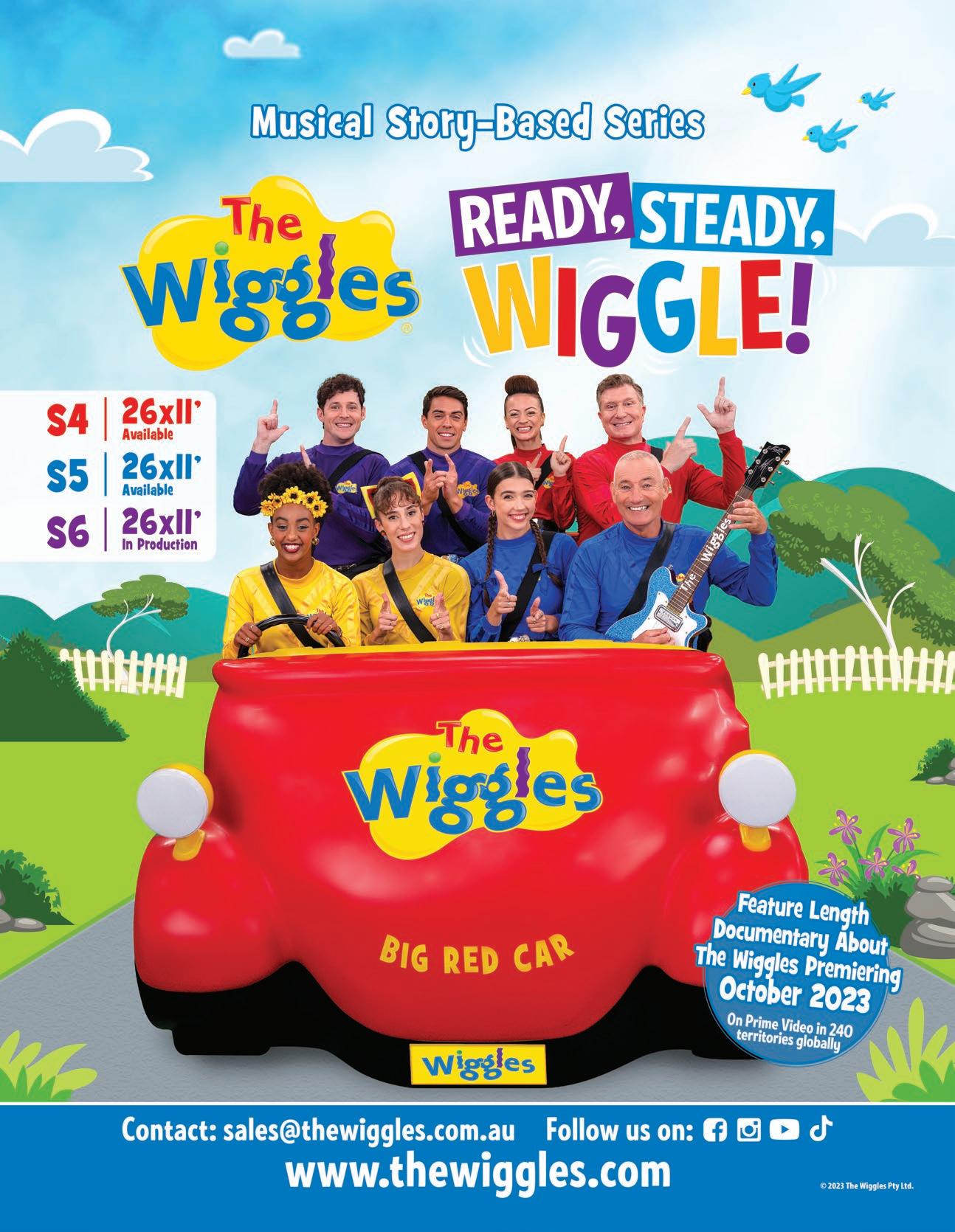
the digital era, children and young consumers explore a vast array of online destinations, creating unique digital playgrounds where they explore, interact and engage with content. Beyond popular platforms like Roblox, Snapchat, TikTok, YouTube, Giphy and Spotify, these digital playgrounds have also become spaces where brands of all origins seek to connect with their fans of the future.
Understanding how young people experience and interact in these online play spaces is critical to building successful strategies in the years to come. So let’s take a moment to dive into this complex and always-changing world.
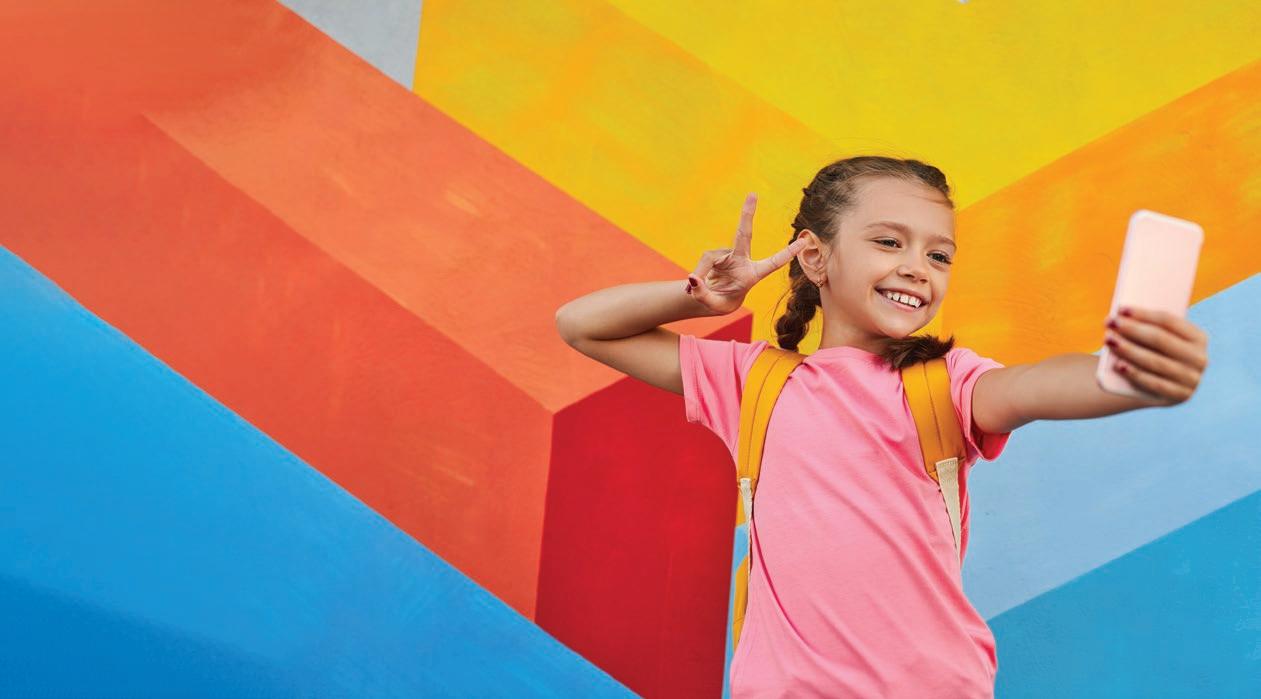
As of October 2022, digital usage in the US among kids up to age 16 looked like the chart on this page.
Some of these numbers are surprising (TikTok’s rise, in particular), but they reflect two trends coming together—access and agency. According to Netfiles (KidsKnowBest’s annual study looking at global media consumption trends), 50% of kids in the US have a smartphone by the age of 10. At the same time, parental influence in choosing a show to watch drops from 40% at age five to 25% at age six in the US, and continues declining as kids get older.
When agency, skill and access merge, kids begin to develop their own niches.
In the ’90s, commissioners presented the content they bought on a TV channel, which was exactly that: one channel. As technology changed, the barriers to entry dropped, and content became free and cheap online. But it was hard to find.
And so, in the ’00s and ’10s, the era of the “hunter-gatherer” emerged, and people
found content in droves. Random discovery led to viral content like “Charlie Bit My Finger,” which was a huge reward (and dopamine hit) for those willing to seek it out. The same happened on Minecraft, Roblox, podcast channels and music spaces like Spotify—we had to find and spend time curating our own channels. It was the era of the “audience commissioner.”
After more than a decade of finding, curating and muddling, the machine has lots of data now. And it’s curated not by a human commissioner or an audience commissioner, but by an algorithmic commissioner.
Our team recently met a group of nine-yearolds who were experts on the TV series Adventure Time, despite the fact that many of them hadn’t watched a single episode! They watch clips on YouTube, TikTok and via GIFs. They know the folklore, Easter eggs and subplots. They relate to the characters and consider themselves fans. We found the same thing with Family Guy, Stranger Things and other shows for the eight to 16 demo.
These kids had found their niche, using it to explore stories and characters that appeal to them on merits they’d defined themselves, and customizing their fandom experience using media options that suit their interests.
Digital usage in the US among kids up to age 16
There are niches and micro-niches for everyone. And those micro-niches allow young people to find, explore and express themselves on topics that are important to them. According to research that KidsKnowBest and Rebel Girls presented at Kidscreen Summit 2023, social and gaming spaces are the most likely media to promote confidence among girls—more so than TV and streamers. And it’s because of this ability to customize fandom with media experiences that support their passions and interests.
A look at the zero to 16 demographic on American social media reveals a huge range of genres. Fed by kids’ personal interests, emotional needs and social influence, social media is where they go for both learning and entertainment.
But the problem is, data begets data. That means if someone reveals they like turtles or the color green at some point along their user journey, the algorithm will give them more turtles and more green. The algorithm constantly validates decisions they’ve already made—which means that, in theory, if someone enters a show’s “world,” they may never exit it.
This is why it has never been more important for IP owners, producers and other stakeholders to have a sophisticated understanding of the most popular “playgrounds” and how kids use them, and then tailor their discoverability strategies appropriately. And this is why we need to think not only about how we “surface” the niches and habits people have, but also about how we reward hunter-gatherer behavior.
We want to encourage meandering, getting lost and stumbling upon a new point of view. In order to achieve that, it’s important to study not just typical social and viewing metrics or key performance indicators, but also how people in your audience build their own personal narratives around your content. What do they make, like and share? Understanding the sentiment and personal relationships your fans have with your brand is more valuable than total views or subscribers.
One person’s experience could unlock the essence of what makes your fans fans.
4 2 5 3 6
I remember exploring Lilo and Stitch and finding threads on Reddit, where many people referenced it as part of their growing-up experience and shared how it influenced their behavior as adults.
These deep conversations often take place in Snapchats, through GIFs and via social media. The SpongeBob creator community on Giphy has made SpongeBob one of the most-used and shared characters in the world, among all ages. And animation studios like Gigglebug, which specializes in mobile content, have used this space to experiment with ways to increase reach and play.
As children and young consumers skip across the digital playgrounds of Roblox, Snapchat, TikTok, YouTube, Giphy and Spotify, brands have a chance to seize the opportunity to engage with future consumers in innovative and creative ways. But this can only be accomplished by understanding the distinct features and dynamics of each platform and how it relates to the behaviors of those who use them. So grab some toys and get in the mix!
PETER ROBINSON is the founder of UK strategic consultancy Gone With, and a specialist in the kids and family media industry for more than 15 years. He consults for KidsKnowBest, a full-service creative agency that’s driven by data and the voices of children and families.
Kids social media operators want producers and brand owners to start thinking about their platforms as the next big opportunity for brands.
BY: RYAN TUCHOWhe tech companies behind kids-only social platforms are some of the truest believers in the value of connecting children with each other, but lately they’ve been adopting a new focus.
Against a market backdrop shaped by the saturation of AVODs like YouTube, linear broadcasters and streamers slashing budgets, and escalating concerns about the effect of broader-reaching social media on children, these operators are starting to position themselves and build reputations as the best places for brands to engage with kids. And they also have aspirations of becoming go-to launchpads for companies that want to test out new content. At the same time, kids are flocking to these safer environments
to avoid the toxicity and misinformation often found on social platforms for adults. And they represent a huge audience.
In the UK alone, 70% of five- to 18-yearolds with their own phones use them to access social platforms, with 7% of kids ages five to seven using TikTok every day, according to February data from Childwise. Meanwhile, in the US, two-thirds of 13- to 17-year-olds use TikTok, and around 60% of them use Instagram and Snapchat, according to surveys conducted by Pew Research Center last year.
Miami-based Zigazoo realized that when kids aged out of Zigazoo Kids, its three-year-old social platform for six- to 12-year-olds, there were few safe spaces where they could go to
create and consume content. So it launched a new platform in March just for tweens and teens, simply called Zigazoo. (It’s worth noting that Zigazoo Kids has more than five million users who will eventually be looking to transition to an older-skewing experience.)
On both of the Zigazoo apps, content creators and brands can make videos, pose challenges and ask users questions. And kids can then respond in videos of their own. Since its launch, the company has raised more than US$20 million in funding.
Its success in the kids space comes from appealing to this audience’s desire to create and not just consume content. Meanwhile, brands say they enjoy Zigazoo because they can hear from real kids, and even take advantage of the

70% 60% 7%
of UK kids ages five to 18 with their own phone use them to access social media platforms.
MORE THAN
of 13- to 17-year-olds in the US use TikTok, Instagram and Snapchat. of UK kids ages five to seven use TikTok every day.
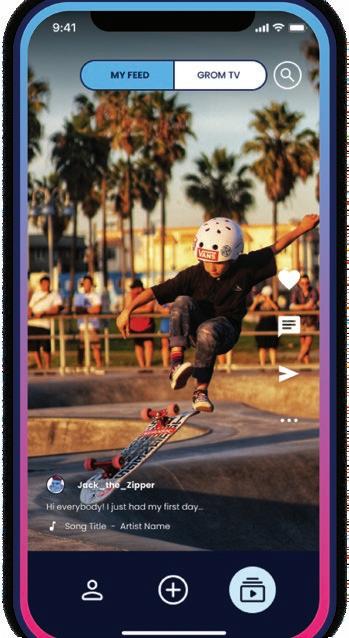
user-generated content that comes from the platform in their marketing.
Companies of all sizes, including the NBA, Nickelodeon and Penguin Random House, have turned to Zigazoo Kids as a new and more engaging way to reach this audience, says Zigazoo founder and CEO Zak Ringelstein.
Connecting with kids on popular broaderreaching platforms such as YouTube and TikTok can be hard since they are totally oversaturated with content. Even new and emerging platforms like Roblox and Fortnite are already overflowing with brands looking to get in front of children.
But age-appropropriate social media platforms are proving themselves to be fertile breeding grounds where brands can
get discovered, stand out from the crowd and build an audience, says Ringelstein, adding that while it’s difficult to reach multiple youth demos at once, young kids and tweens keep coming back to Zigazoo for its challenge-based and creative focus that lets them create videos and engage with others through content.
Mix this chance to be a creator with some safety precautions—e.g. video moderation and only allowing users to respond to videos with positive emojis—and you have a recipe for serving up a place where kids want to be, adds Zigazoo Kids president Ashley Mady.
The company’s next goal is to attract more brands to its platforms, and an expanded portfolio of features might be key









































to achieving it. Zigazoo has already tested selling NFTs, and it’s now exploring new programs that let users subscribe to creators they like and redeem in-app currency for physical products in retail stores.
“Kids want places that are constructive, positive and safe where they can explore their interests and be themselves,” says Ringelstein. “It’s all about figuring out how to create the best playgrounds possible.”
Florida’s Grom Social Enterprises sees the under-13 crowd—too young to be on major platforms like TikTok and Snapchat, but eager to connect with friends and their favorite brands online—as its social media sweet spot. With this in mind, the 12-year-old company is relaunching its Grom Social kids app in October to provide more opportunities for brands to make a home for themselves.
To attract kids and protect their privacy, Grom is rebooting its app with a new feature to create customized avatars that can stand in for kids in photos and videos—and it also lets them choose licensed avatars for a small fee.

Grom’s monetization model has an in-app currency that kids can spend on accessories to personalize their avatars as well. And the company plans to offer ad sales opportunities to third-party brands that want to have their posts and profiles highlighted.
Company founder Zach Marks started Grom Social when he was just 12 years old; at the time, his parents didn’t want him on social media, but he was looking for a way to connect with his friends online. With the rebooted app, Marks is looking to target that exact same demo of kids who aren’t allowed on older-skewing platforms but are still hungry for fun connectivity.
The new app is COPPA-compliant so it doesn’t share any kid data. But safety isn’t exactly a strong selling point for its users; social apps have to first and foremost be fun to draw them in, says Paul Ward, Grom’s president of social media and EVP of enterprises. With a background in marketing at Nickelodeon, Ward knows that kids want an escapist experience.
The company has run its social platform for several years, but more recently it has been building up a content business that will be leveraged on the new platform. Grom acquired Philippines-based animation studio Top Draw in 2016 and California’s Curiosity Ink Media in 2021. The strategy behind these moves is
double-edged: To fortify Grom Social with new shows and brands, and to get eyeballs on its proprietary content at an early stage.
Launching content such as Christmasthemed feature film Santa.com and animated series Baldwin on Grom Social will give the company a chance to see what kids like. And it can also build a DTC business through the platform by selling related avatars, outfits and accessories.
Grom isn’t looking to compete with social media giants like TikTok or Snapchat, which have massive teams and huge development budgets. But there’s a growing niche market for safe digital spaces made just for kids that the company is very interested in.
Parents have expressed a strong demand for environments where kids can be fun and safe, while also learning how to be good digital citizens, says Marks. Acting as “digital training wheels” is a major aim for kids social platforms, which are most attractive to families when they teach children how to behave both online and IRL, says Rajeev Gupta, founder of GeckoLife.
Leaning into that goal, the Australian platform is taking a more collaborative approach to social media, letting users create private groups of friends and family members and share memories, photos, videos and posts privately with this community.
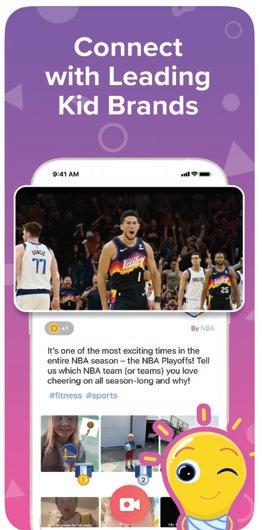
The platform doesn’t offer a messaging function; instead it focuses on providing families with a secure place where they can file away their memories. GeckoLife launched in 2014 and currently has around 25,000 users, roughly 10% of which are organizations and groups, says Gupta.
The company’s other aim is to become a place where brands and companies can share photos from events, post behind-the-scenes pics and deliver posts for their audiences. Content can be searched by looking up events or dates, so fans don’t have to go scrolling through long timelines to try and find what they’re looking for, says Gupta.
GeckoLife’s medium- to long-term goal is to evolve a white-label product that execs can bring into their own businesses as an information management and storage tool. In this way, GeckoLife can work for companies as an organizational mechanism that speeds up communication between teams with a simple user interface, where it’s easy for a producer to message groups, for animators to find files and for creatives to make groups to speed up workflow and keep information private.
While GeckoLife won’t ever feature ads, Gupta says the company is exploring the possibility of charging groups and brands that use the service a lot.
Unlike TV channels and games that kids eventually outgrow and migrate away from, the hope is that GeckoLife’s posts and conversations will become a time capsule that users can revisit in the future. “Today, it’s about communicating and being connected,” says Gupta. But the long-term value of kids social media is in the older content that they can look back on. It’s as good as a memory.”
Reddit user recently posted concept art of “national superheroes” for several different countries. Greece’s hero is Zeus in sunglasses and combat boots. Japan’s is rocking a look I’d call “rave kimono befriends jellyfish.” And Turkey’s is, well, dervish-ish. A year ago, this project might have taken an artist months to complete. But in July 2023, it probably only took Redditor u/marehori a few hours, using ChatGPT to generate the descriptions of the heroes and Midjourney to render them.
Generative AI—including large language models (LLMs) and image, music and video generators—has the potential to fuel an explosion of creativity in animation. But is it actually creativity? And should we be using the word “artist” to describe both someone who types a text prompt and someone who writes a script or designs a character from scratch?
My instinctive answers are “no” and “no.” Animation, like all art, is magic—profoundly human magic. At the molecular level, it’s made of intention. And AI has no intentions. But there’s a good chance that my instincts are wrong here.
New creative tools and art forms have met with the same distrust and resistance since some Neolithic hipster said, “Hey, what if we painted outside the caves?” Your aunt and mine probably agree that abstract expressionist paintings look like something a four-year-old could’ve made. And self-appointed guardians of tradition dismissed John Cage as noise, and harrumphed when Merce Cunningham sat in a chair and called it dance. Generative AI will take some getting used to, but I think in time we’ll come to see it as a legitimate, if fundamentally different, way of making art.
Whether you buy that or not, here’s the stark reality: AI is coming. As tech entrepreneur Joshua Browder put it, trying to stop it would be “like dinosaurs suing to stop the Ice Age.” That means we need to start focusing on how, not whether, to use it—and how to do so ethically.
AI ethicists Tristan Harris and Aza Raskin offer a useful lens in their excellent talk “The AI Dilemma,” noting that, “when we invent a new technology, we uncover a new class of harms…and new responsibilities.”

With that in mind, what are some of the potential harms we should be looking out for as AI infiltrates animation? And what new responsibilities do we need to take on?
Amid industry-wide disruption and studio budget cuts, everyone’s under pressure to reduce costs, and there’s widespread fear about algorithms replacing artists.
Runway AI CEO Cristóbal Valenzuela says that’s the wrong way to look at it. Instead, he believes that AI-assisted filmmaking will be a total paradigm shift—not the same pipelines with fewer humans, but entirely new ways of making entertainment.
Kidscreen’s AI columnist weighs in on the new responsibilities and potential harms this tech poses for creatives.EVAN BAILY is a TV/film producer and showrunner who also consults for entertainment, media, consumer products and tech companies.
If he’s right, this is a once-in-a-lifetime opportunity to reinvent our industry from the ground up. So what’s our responsibility here? In my view, it’s to not let this radical shift be reduced to an exercise in force reduction and padding profit margins. We need to spur a deeper and more holistic conversation about what else to prioritize in this moment of revolutionary change—and ensuring that the creative people who’ve built this industry remain at the center of the content creation process should be at the top of everyone’s list.
AI understand that letting yourself get a little lost for a while can lead to better outcomes.
When we finish a film, it’s more than just a film; it has a sliver of me, a sliver of you, and a sliver of everyone else on the team in it. It’s a living record of how we came together and drew on our life experiences and creative convictions to make something we all believe in.
But AI doesn’t believe in anything; it has no life experiences or convictions, and it can’t make decisions—it can only triangulate from the ones it finds in its training data. So using contributions from an image generator or LLM might enhance a project aesthetically, but doing so weakens the ties between the creators and the material. This poses a real threat to the humanity and soul of the work. Our responsibility here: Make sure that the defining creative content in a project comes from people, not AI.
According to new research by scholars in the UK and Canada, as AI models are fed data generated by other models, they degenerate. This can cause them to “misperceive reality even further,” according to Ilia Shumailov, one of the authors of the study, and eventually “collapse,” producing unusable output.
By using generative AI to make content that will then be ingested by other AIs, are we at risk of creating a content echo chamber with narrower and narrower creative horizons, leading eventually to a kind of “culture collapse”?
LLMs absorb the biases in their training data, steal without attribution, and according to a recent study led by AI research firm Anthropic, suffer from “sycophancy bias”—a tendency to serve up the answers that they think users want. And that’s just the stuff we know about. We’re learning more every day about the ways these models can go rogue.
Our new responsibility? If we’re using LLMs, we need to be careful not to expose audiences to problematic stereotypes (the Reddit post I referenced in the first paragraph highlights the pitfalls here), clone other storytellers’ ideas, or pander to audience expectations. And needless to say, careful vetting of LLM output is even more important when it comes to making entertainment for kids.
One of the harms I’m most worried about with generative AI is its potential to rob artists of the opportunity to grow. We get good at making things by failing and learning from our mistakes. If we take failure off the table by giving creative people access to a tool that offers to instantly and effortlessly solve their problems, it’ll be debilitating to them and damaging to our community.
A key responsibility here, especially for seasoned creatives, will be resisting facile solutions, and helping those who’ve never known a creative process without the training wheels of
Our responsibility here: Resist getting trapped by tropes. Take risks. Reject anything a model serves up that feels warmed over. Feed the culture, don’t feed off it.
I love the collaborative nature of the animation production process, and thinking about it working differently (for example, solo artists making entire films using only text prompts) feels like harm.
But over the course of my career, I’ve worked with some brilliant creators who, without resources, relationships, or formal training, have found ways to put their stories on the screen. I can’t help but wonder what they could have accomplished with access to these powerful new tools—and how many new voices AI will empower that we otherwise wouldn’t get to hear.
So the last new responsibility I’ll offer up is this: If you think you’ve spotted a potential harm, pause and ask yourself whether it’s actually the problem—or if you are.
As Runway’s Valenzuela says, we’re in the “early innings” of AI. So my thoughts here are just scratching the surface— and they’re sure to be off base in ways both large and small. As generative AI becomes more commonplace, new harms and responsibilities will surface at a breakneck pace.
If you have ideas about other things we should be looking out for—or feedback about this piece—I’d love to hear from you (ai@conbail.com).
Should we be using the word “artist” to describe both someone who types a text prompt and someone who writes a script or designs a character from scratch?
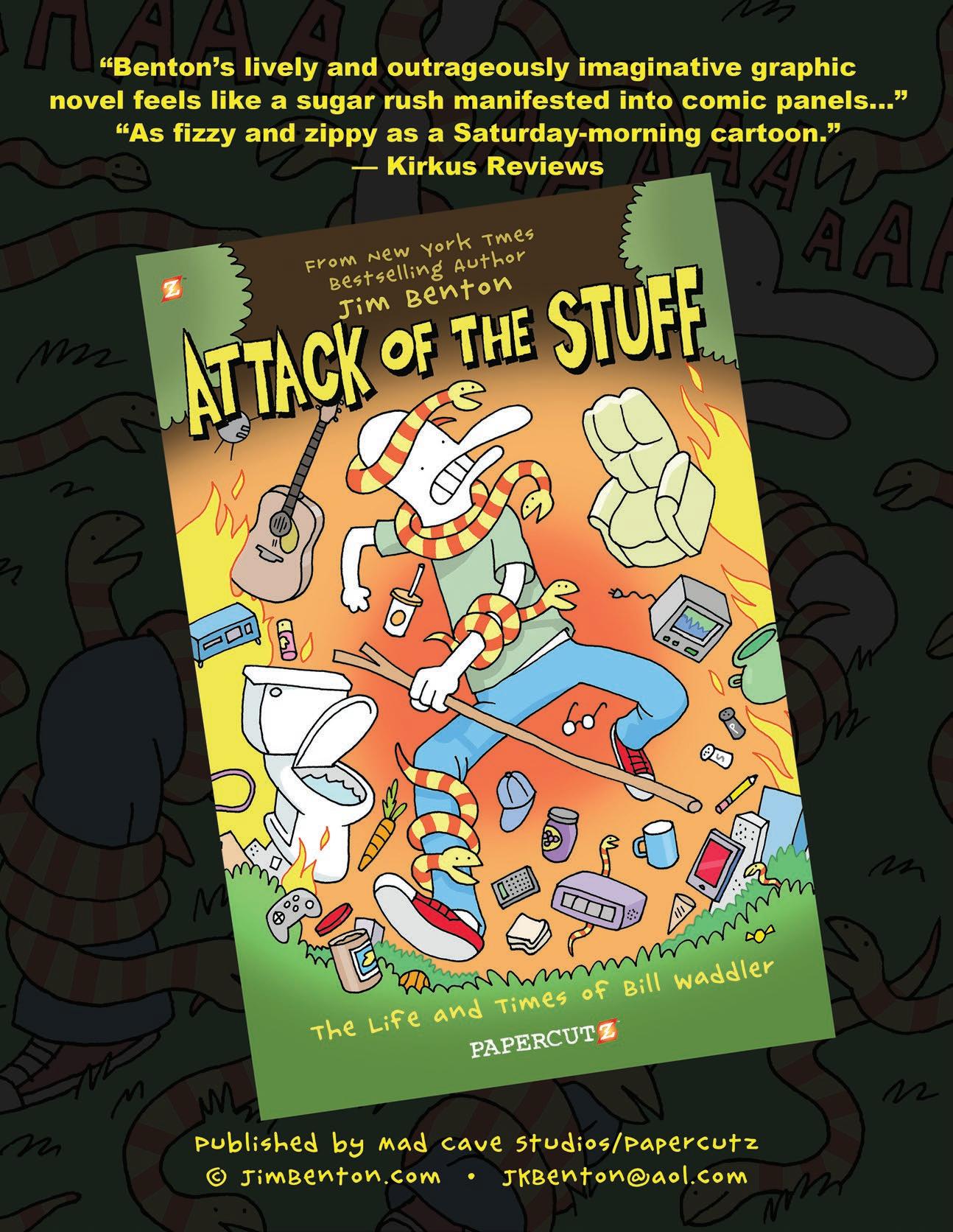


It was a giant leap for pupkind when PAW Patrol first launched in 2013. The Spin Master franchise turns 10 this year, and is marking the anniversary with its first spinoff, Rubble & Crew, which premiered in April, and the September release of its second feature film, PAW Patrol: The Mighty Movie
 BY: COLE WATSON & SADHANA BHARANIDHARAN
BY: COLE WATSON & SADHANA BHARANIDHARAN

ver the last decade, the IP has earned tail-wagging distinction as one of the most lucrative preschool brands of all time, with the series being broadcast into 350 million homes and the franchise generating more than US$14 billion in worldwide retail sales. Kidscreen is hopping on a pupmobile to explore the origins of this canine success story with the execs and talent who helped create it.

Jennifer Dodge (president of entertainment and executive producer of PAW Patrol, Spin Master): My first experience with PAW Patrol was taking the pitch from Keith Chapman. We had gone around the world talking to different creators and studios because we wanted to do an adventurous preschool series. And then Keith pitched us this concept called Robbie & the Rescue Dogs.
What stood out right from the beginning was the relatability of dogs with jobs. Children love dogs, but they also understand this concept because we see it all the time—the firehouse dog, the police dog—it exists in real life. We found that reality compelling, and it also had an aspirational quality.


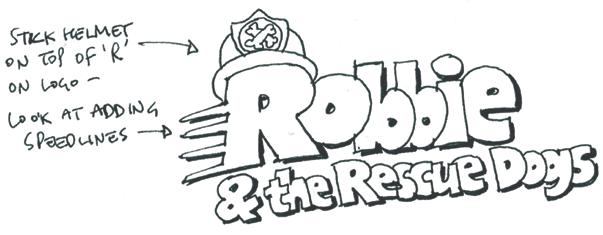

It was the idea that the dogs’ houses transform into their vehicles, and they could be heroes in the community, doing jobs that were really relatable. I think that was the first thing that really excited me when I took the pitch.
Cat Demas (VP of design for toy entertainment, Spin Master): At the time, there were a lot of preschool properties in the space already, but I think the design language for PAW Patrol was unique. There was nothing really for a preschooler that felt heroic. We quickly made a conscious decision to amp up everything to give the pups and their vehicles really cool-looking tires and uniforms, while still keeping it all preschool-friendly.
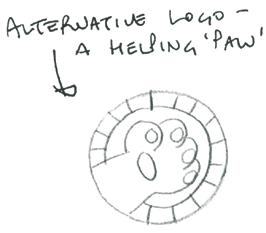
Dodge: When the entertainment division launched in 2008, we had Bakugan on the air and we were working on other action properties. Right after, we decided that we wanted to make preschool a priority in our development slate.
Demas: The toy team, which I was part of, was very small. We literally had three people on our preschool team working hand in hand with Jen. But there is this really symbiotic relationship between the toy and entertainment groups, and how we tackle design problem-solving, that makes it feel like we’re functioning as one team. We’re trying to bake in innovation and make something that no one has seen before, because It wasn’t like we had this super-strong preschool line or franchise already in place.
The now-iconic PAW crew sported a very different look in the initial artwork sketched by preschool TV veteran Keith ChapmanThe idea of dog kennels transforming into vehicles was one of the aspects that caught Jennifer Dodge’s interest when she took the pitch for the series in 2010


The pups were designed to encompass different breeds with distinct specialties and personality traits—such as Marshall the Dalmatian, who is the team’s fire dog and is known to be a little bit clumsy

Frank Falcone (president and executive creative director, Guru Studio): The team was a little apprehensive at first. Animators can be very selective; they like cool action heroes fighting evil villains. But a toy company with a commercial property about dogs with civic jobs? In all honesty, it wasn’t a big magnet for creative talent right away. But we carefully considered the material and focused on the key: creating authentic and entertaining pups.
Andrew Strimaitis (studio animation director, Guru Studio): The animation team at Guru was mostly established intermediates and senior-level talents, having just completed animating season two of Justin Time
Dodge: It started with a one-pager of sketches, which is how we love to start so that we can bring our expertise— not just as producers, but also our understanding of how children play and engage. The first question we started with was, “What are the most popular breeds around the world?” Then we thought about which breed is qualified to do which job—for example, the German Shepherd as the police dog, and the Labrador as the water rescue dog.
Jamie Whitney (PAW Patrol’s supervising director, Guru Studio): Some of the characters, like Rubble, evolved and changed, whereas others stayed close to the initial sketches. The first board was tough to crack because a lot of the staple moments you see in every episode had to be invented...it had to feel iconic. The team that worked on the development was initially around 10 people, which made the process intense, but very fun!

Matt Hoyte (animation lead for PAW Patrol, Guru Studio): The “Gear Up” sequence where they slide down the tower is where we really worked out the details of each character’s personality. Marshall is a bit out of control and clumsy, but Chase goes down the slide [and lands in] a heroic pose to showcase his leadership role.
Yurie Rocha (director, Guru Studio): All my worries vanished instantly when I witnessed the very first animation test of Chase delivering a heroic line. I knew that we had struck gold.
Breed: Dalmatian
Occupation: Fire fighter
Demas: Once the entertainment launched, there were so many Google searches for PAW Patrol toys. Plus, we had a pretty regular cadence with retailers coming in to see us and asking, “When are the PAW Patrol toys coming?”
If you went to Pinterest, you would see people making their own PAW Patrol birthday parties, [even though] there were no paper goods, there were no cake toppers, there was nothing. They would sculpt their own pups or paint PAW Patrol banners from scratch, which showed us that there was definitely demand for both toys and licensed products at the time.




Breed: German Shepherd
Occupation: Police officer
Breed: English Bulldog
Occupation: Construction worker
Breed: Labrador Retriever
Occupation: Water rescue pup
Breed: Cockapoo
Occupation: Air rescue pup
Breed: Mixed Occupation: Eco pup
There was a one-year delay between the entertainment and the toy launch. We had the core vehicles and we had a feature vehicle, but the very first product that we launched was the Lookout Tower. And the Tower was interesting because we knew we wanted sort of a centerpiece and headquarters for the pups, but we didn’t know exactly what it would look like.
We actually worked with our Advanced Concepts Team in Toronto to help us brainstorm its design. They came up with this really unique idea of an indexing base, and each pup would have their own slot for their car. We had already figured out what the cars would do, and each of the pup’s jobs, but we didn’t have that headquarters locked in.
That initial range was really lean when you think about what the PAW Patrol toys are now, because while we had a great feeling about our line, you just never know if something is going to hit. But I love those items. I think the vehicles and the Tower are still the heart of the brand, and we continue to revisit them every year.
Chris Bobinski (studio asset director, Guru Studio): As someone who grew up in the ’80s, the symbiotic relationship between animation and toys has always held a special place in my heart. Our early discussions [prioritized] a balance between the requirements of toys and the demands of the cartoon, with the aim of captivating audiences in both worlds.
Pamela Kaufman (president and CEO of international markets, global consumer products and experiences, Paramount): PAW Patrol was a huge success right away—a bona fide ratings hit that took the preschool world by storm. And the early toy sales from Spin Master were incredibly promising. The demand was so great that consumers started making products on their own. We mobilized our organization quickly so we could hit shelves within a year of the show’s premiere, licensing across a wide variety of categories. That’s much faster than a typical licensing program works.
One specific challenge we faced was breaking into new territories like Japan. We tailored our approach, examined different models, and formed a five-party consortium of strategic partners to best gain ground in that market. Now it’s one of the markets seeing the most growth and demand for PAW Patrol.


Dodge: We realized that we’d been on TV for five years and we were still number one in the hearts of preschoolers, so we thought we could take this to the big screen. We had already done some fully formatted specials, so we knew that our audience had the attention span for deeper storytelling.
With a movie, we thought we could not only do bigger action, but we could also tell a story and learn more about one of our pups. So we chose Chase for the first movie. What is his backstory? What makes Chase tick?
Kaufman: The brand has evolved from a TV hit to a fully developed franchise with tons of touchpoints—consumer products, live events, resorts and digital extensions including games. Kids know they can find PAW Patrol, a brand and characters they love, almost anywhere.

In general, the biggest challenge is the same with any huge brand—keeping it growing. And we’re doing that. PAW Patrol: The Movie is by far the most-rewatched film on Paramount+, streamed an average of six times per household.
Dodge: While we wrote and went into production before the pandemic, the animation started about two weeks after the lockdown. So we completed every frame of animation under those circumstances and delivered on time.
What was really interesting about the movie was the storyline of change—going into the city and working through scary memories; and also learning that being brave doesn’t mean you’re never scared. When the movie released, it was just as restrictions were starting to open up, [but] there were still masks in the theaters and capacity limits. It was a really intimidating time—so in a way, Chase’s story really resonated and reflected what children, and even their parents, were feeling at the time.
Kaufman: PAW Patrol has made a social impact as well, partnering with organizations like Canine Companions that help provide and train guide dogs for those who need them…and when Paramount launched a reusable face mask program at the beginning of the pandemic, PAW Patrol masks were made available to make the new circumstances more manageable for kids.
Demas: The challenge that we continue to face is the rising cost of goods. We have to be creative about how we make our products and how we assemble. It’s all the way down the product development cycle—from the beginning of the design to the end when you’re manufacturing.
There’s a lot of creativity that goes into not only the upfront design, but also the backend with our Hong Kong and Asia partners. It just takes a lot more time to figure that out and maintain what’s important to the brand and its level of quality.
Rex Ishibashi (co-founder and CEO, Originator): Once we became part of Spin in 2021, we immediately started a design around what PAW could be in the app space. At the time, there were a lot of apps out there that were doing education but didn’t engage kids and didn’t want to be played because they were too dry. We felt like we could thread the needle and balance both education and entertainment. And it was really interesting seeing the arc of how the series had evolved over time.
Now we’re on the eve of the second movie, and the entertainment group has developed the PAW Brand Bible—which is this thick, electronic document that we were going through to learn all the rules of the franchise. Using that document and experience from our previous mobile titles, we made our core vision for PAW Patrol Academy, which is the franchise’s first educational app.
Falcone: We’ve always put all our creative energy and efforts into creating an ensemble that any kid could get behind. Lo and behold, from that sprung an incredible 10 seasons!
Strimaitis: We were really excited to bring a world of dogs and transforming gadgets to life, [not knowing] that it would become the phenomenon it is today.
Dodge: Anyone who works in entertainment will say that to get even one IP like this is rare, and it’s rewarding. I think PAW Patrol will be evergreen, and the kids who watch it today will look back as adults with fondness.
Demas: Never underestimate the intelligence of a preschooler. I think they’re pretty sophisticated now, and they’re exposed to a lot more through phones and YouTube.
You have to remember that all of these dynamics around kids are changing, but play is such an important part. That doesn’t change; you can’t leapfrog that. You still have to give kids a childhood and tangible things to play with to spark their imagination. And I think when you combine storytelling with toys, that’s the secret recipe to our success.
Nearly 80 new projects in development are heading to Cartoon Forum’s annual pitchfest, and we’ve rounded up our favorites, featuring some razzle-dazzle, a little flora and fauna, and a side of medieval meow-gic!
BY: SADHANA BHARANIDHARAN & ANDREA HERNANDEZProducer: Watch Next Media (France)
Style: 2D animation
Format: 13 x 22 minutes
Budget: US$5.5 million
Status: A bible, two scripts, series arc and trailer are ready, with a full episode animatic slated for production this fall.
Delivery: 2025/2026
In this RPG-inspired adventure, four kittens face the ultimate test of survival and friendship as part of a mission to return home. After they’re banished from the Kingdom of Cats due to a misunderstanding, they set out to find a treasure that is purr-fect enough to get them back in the good graces of their ruler, King Walter. France Télévisions is attached as a commissioning broadcaster.
 6 to 9
6 to 9
Producer: Hampa Studio (Spain)
Style: 2D animation
Format: 26 x 11 minutes
Budget: US$2.9 million
Status: A bible and character/background designs are currently available, as well as a pilot script and an animation test. The company is now seeking co-production partners and broadcasters.
Delivery: 18 months after greenlight
Adán Martínez and Álvaro Ortiz created this series about a scarecrow and a koala bear who work with their boss (a 500-year-old frog) to save the failing Rancid Ranch—their home and the only remaining traditional candy farm in Sugar Town—from a modern mega-factory next door that wants to buy it. Candy Inc. already owns the rest of the town, and its greedy owners will stop at nothing to make this final acquisition to complete their monopoly.

Co-producers: Made By Us and JA Film (Denmark)
Style: 2D animation, with computer-generated backgrounds that look like drawings and paintings
Format: 52 x 2.5 minutes
Budget: US$1.8 million
Status: Seeking broadcasters and distributors.
Delivery: 2024
Melvis and Marie are a pair of ladybug siblings with mismatched personalities who used to live in a book, but end up in a sandbox after a strong gust of wind blows their literary home away. They learn to manage their feelings and strengthen their relationship by respecting each other’s differences—all while doing things like playing, exploring, building sand castles, playing sand drums and discovering a fly cave.
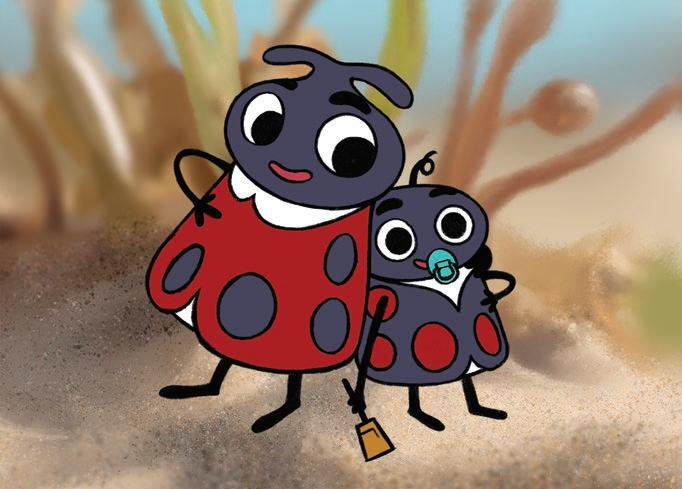
Producer: Dept. (Norway)
Style: CG animation
Format: 52 x seven minutes
Budget: US$4.4 million to US$5.5 million
Status: A bible, character/background designs, pilot script and animation test are ready. Securing co-production partners is the next goal.
Delivery: Late 2025
This sci-fi preschool toon is all about plants and planets, starring a notebook-toting botanist who collects cosmic seeds and plants for future generations. The mission seems simple enough, but Yukon and his two best friends—a witty earthworm and a doting planet—face some intergalactic and botanical hurdles along the way, ranging from navigating the intestines of a monstrous space cow, to being ejected from a seed-spitting cannon-flower. Sara Daddy (Puffin Rock) is attached as the main screenwriter on the project.

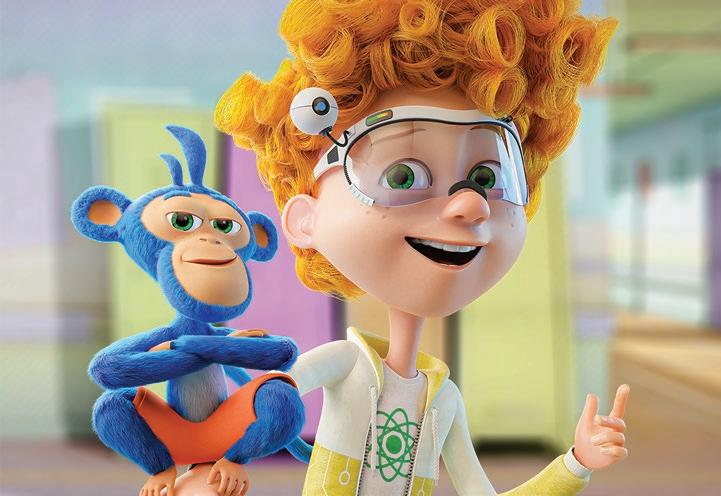
Producer: Badi Badi (Poland)
Style: 2D and CG animation
Format: 56 x six minutes
Budget: US$2.9 million
Status: One pilot episode is complete, and Badi Badi is looking for co-producers, broadcasters and distributors. Development is supported by the Polish Film Institute.
Delivery: 24 months after greenlight
In this educational series, a 14-year-old boy creates an online vlog to explain the origins and workings of everyday inventions and phenomena ranging from smartphones and airplanes, to vibration and solar energy. He also cracks jokes related to their creators and discoverers.
Co-producers: Letko (Poland), The Fryderyk Chopin Institute (Poland)
Style: 2D animation
Format: 52 x seven minutes
Budget: US$3.8 million
Status: A bible, three scripts and 10 stories are ready, and a pilot will be completed by the end of September.
Delivery: Q4 2025
This fantastical series centers around an imaginative sixyear-old boy who is passionate about music and inspired by legendary Polish composer and pianist Frédéric Chopin. Freddie explores the world of sounds and symphonies with his sister, his best friend and a mysterious cat named Candy.
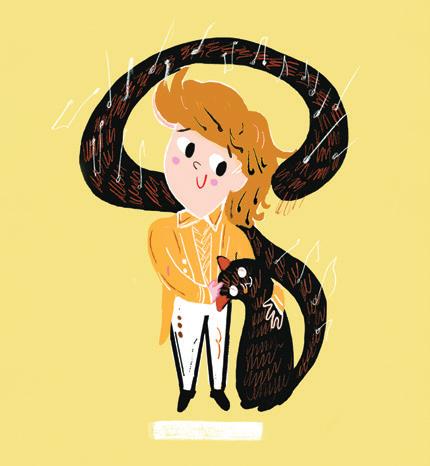
Producer: Fabelaktiv (Norway)
Style: 2D animation
Format: 26 x five minutes
Budget: US$1.3 million
Status: A bible and pilot are completed, and Fabelaktiv is looking for broadcasters, distributors, sales agents, co-producers and financing. Delivery: Season one in 2025; season two in 2026
Ursa, a young polar bear who lives in the Arctic Circle, has epic adventures with his friends while saving other animals from environmental dangers such as melting ice and plastic waste in the ocean. The show’s music and design are inspired by the art and culture of the North.

to 9
Co-producers: Lighthouse Studios (Ireland), Dog Ears (UK)
Style: 2D animation
Format: 26 x 11 minutes
Budget: US$4.6 million
Status: The producers are looking for a lead broadcaster.
Delivery: Late 2024/early 2025
This comedy is set at Showtime School, an arts-based primary school for animals founded by an ostrich named Miss Feathers. With a fair share of fur, feathers— and, of course, a passion for the performing arts—the students tackle subjects like the history of puppetry and the science of sound waves. Gilly Fogg (El Deafo) is directing, with Sian Ní Mhuirí (Fia’s Fairies) on board as a scriptwriter.

Restaurant Emile
Established in the 1940s, this eatery in the heart of the city at Place Saint-Georges is a local institution with a unique ambiance. Starters include marinated salmon with ginger and lime—a real twist—and I love their renowned cassoulet. I always leave with a smile on my face…and my pants feeling a little tighter!
Au Pois Gourmand
Located on the banks of the Garonne River, this restaurant has it all: A beautiful setting, gourmet food, a lovely outdoor terrace overlooking the river, and a very stylish interior space as well.
The Botanist Pub
Not far from the Centre du Congrès, the Botanist puts the ‘happy’ in Happy Hour. It’s a fun, lively pub with greenery-laden décor and a good selection of tapas-style food.
Amorino
Have you ever had an ice cream in the shape of a flower?
Located at Place du Capitole, Amorino’s ice cream creations are works of art—unusual and wonderful to look at, but too tempting not to devour.
For all ‘kidults,’ it’s definitely worth visiting this museum in Toulouse’s suburbs, if you have the time. There’s a giant mechanical Minotaur, dragons, spiders and various interactive exhibits—and adults are just as welcome as kids!
Jardins
Strolling through these Zen gardens is really relaxing. You feel as if you are stepping into an authentic Japanese park— Shinrin-yoku (forest bathing) at its best, and worth switching off the cell phone for a little while. (I promise you won’t have withdrawal symptoms.)
The impressive architecture of this fabulous 13th-century monastery includes an unusual column that resembles a palm tree, along with frescos, stained glass windows and the reliquary of Thomas Aquinas. There’s also a small museum showcasing medieval pieces.

Located just a short taxi ride from the city center, this fun and interesting place features full-scale models of spacecraft (including a space shuttle), a command center and lunar habitats, plus two planetariums. Highly recommend!
David is president and co-founder of leading kids prodco Cottonwood Media, a seasoned Cartoon Forum attendee, and a connoisseur of most things Toulousian, thanks to having family living in the region. When he’s not juggling work and his two feisty sons, he loves to read, cook microwave food and watch way too much reality television!









